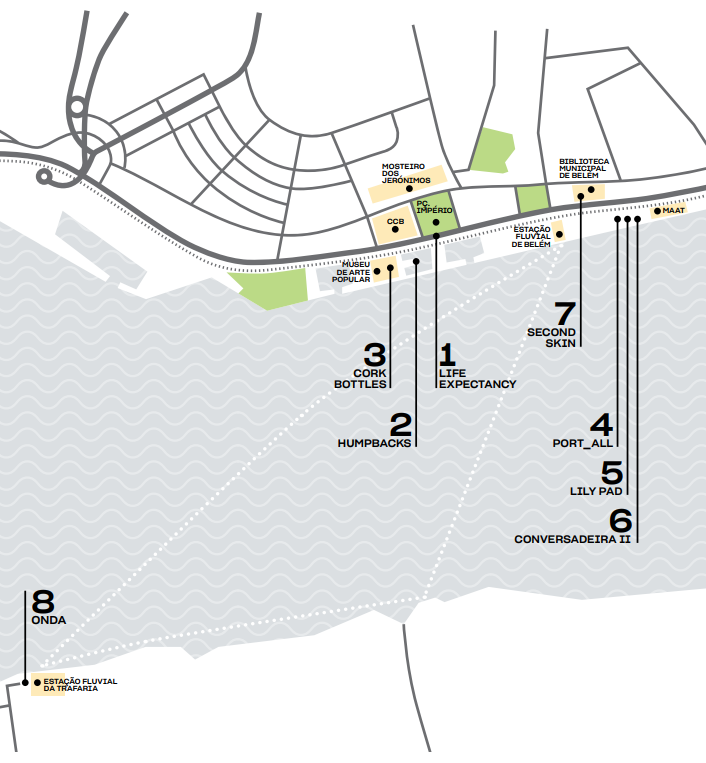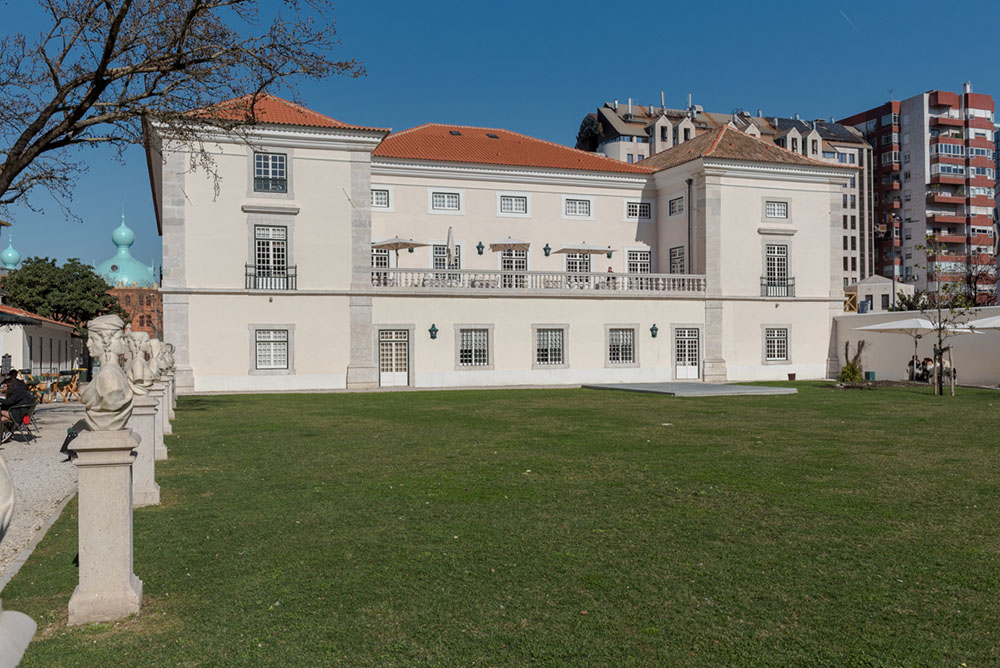The directors and programmers of five film festivals, which take place in October in Lisbon, reveal the main news, guests and, of course, the films that everyone will want to see.
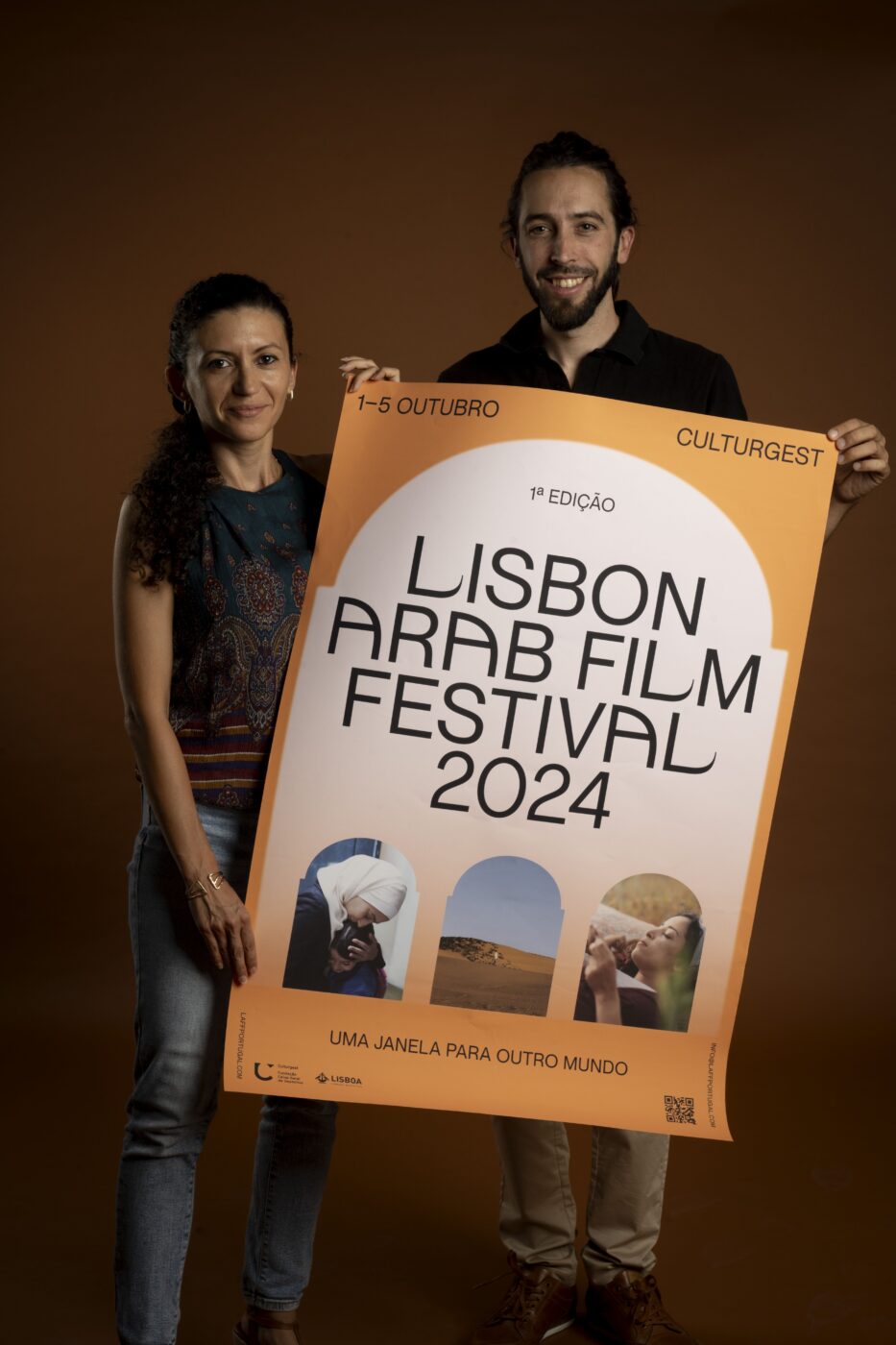
LAFF – Lisbon Arab Film Festival
October 1 to 5
When French-Tunisian Saoussen Khalifa arrived in Portugal five years ago, she noticed that “there were many similarities and influences from the Arab world in Portugal”, but “there was little awareness of these connections”. The need to showcase this intersection of cultures was the starting point for the Lisbon Arab Film Festival.
This first edition of the event seeks to promote dialogue between cultures and offer a vision of today’s Arab societies, contradicting stereotypical ideas. From the programme, João Gonçalves highlights the opening film, Everybody Loves Touda, by the French-Moroccan, Nabil Ayouch, who was present at the Cannes festival and was chosen as Morocco’s candidate for the Oscar
But there’s more: Bye bye Tiberias, by Lina Soualem, a documentary focused on Israel’s occupation of Palestine, and the closing session film, Inshallah a Boy, a drama by Amjad Al Rasheed, filmed in Jordan, are “unmissable”.
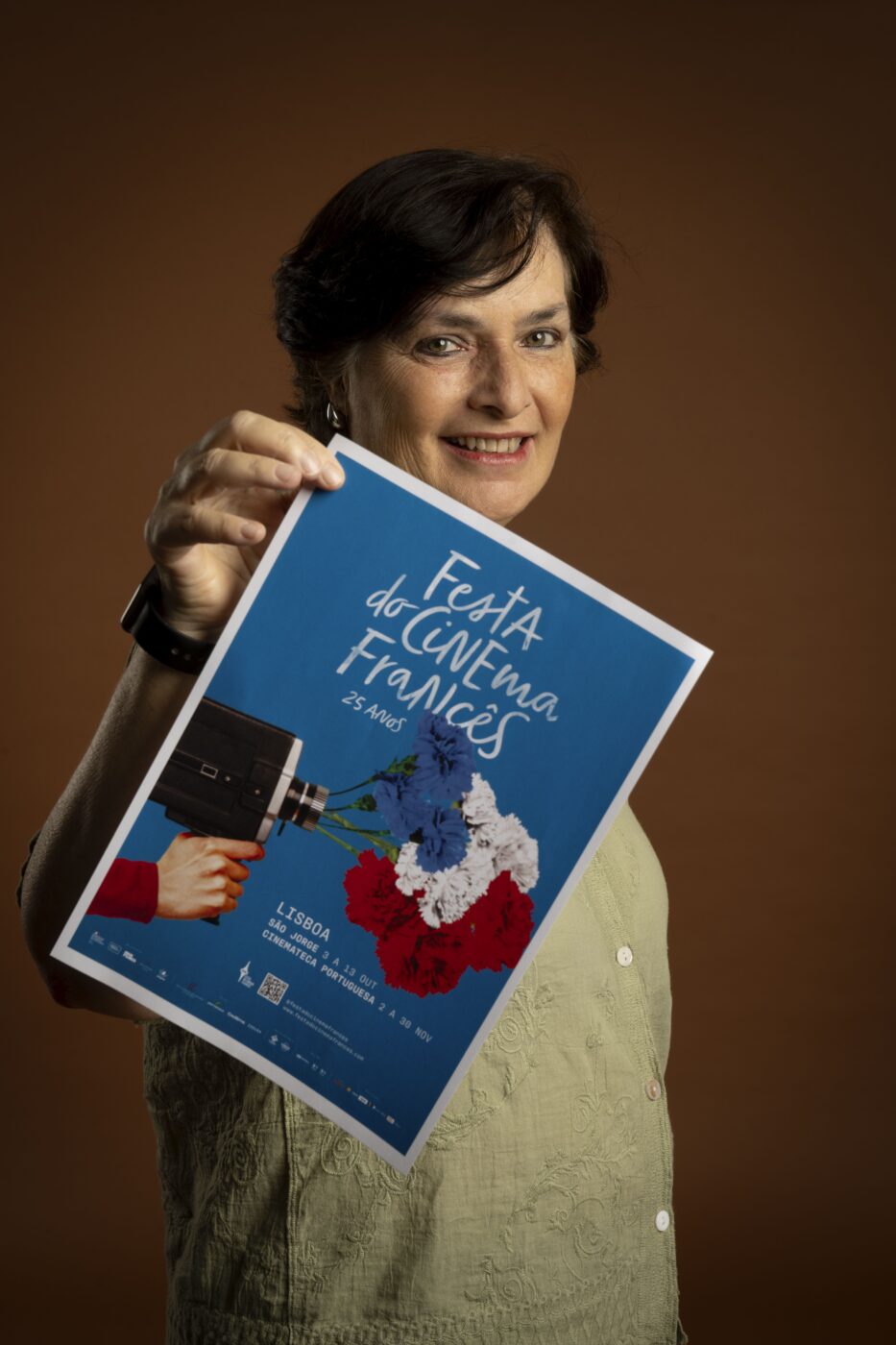 Kátia Adler (diretor)
Kátia Adler (diretor)
French Film Festival
October 3 to November 3
The French Film Festival celebrates 25 years. Kátia Adler states that “the Festival has a growing audience” and in this sense, this year for the first time, “there are five films in competition, all premieres, with the aim of achieving even greater participation of the public.”
From the vast programme, two new sections stand out: Rir à grande e à francesa, which presents comedy films, because as the festival director says “we need to laugh and go to the cinema”; and Uma Língua, Múltiplos Olhares, which exhibits works that result from Franco-Belgian co-productions. Kátia Adler also highlights a film that left a lasting impression on her for its cinematography: The Successor, by Xavier Legrand, a thriller that is surprising and “a pearl”.
In November, still within the scope of this edition of the Festival, Cinemateca Portuguesa presents a complete retrospective of the work of filmmaker Chris Marker (1921-2012).

Tribeca Festival Lisboa
October 18 and 19
“We want the festival to be a celebration of the best of pop culture and the crossroads between national and international talent. To achieve this, we will have great international films brought to Lisbon by the Tribeca Enterprises team, but also national productions, giving stage to our country’s storytellers and creatives.” This is how Mónica Serrano describes the purpose of the first edition of the Tribeca Festival Lisboa , a brand that was born in New York and is now arriving in Lisbon.
The programme also includes series, podcasts, musical performances and live chats with international and national stars. North Americans Whoopi Goldberg, Robert De Niro and Griffin Dunne, international star Daniela Ruah, and Portuguese Ricardo Araújo Pereira and César Mourão, are some of the personalities present at the event.
The films to be shown include award-winning works such as Anora (winner of the Palme d’Or at Cannes), Griffin in Summer, In the Summers and Bob Trevino Likes It, and Portuguese films such as Podia Ter Esperado Por agosto, Azul and O Afinador de Silêncios.
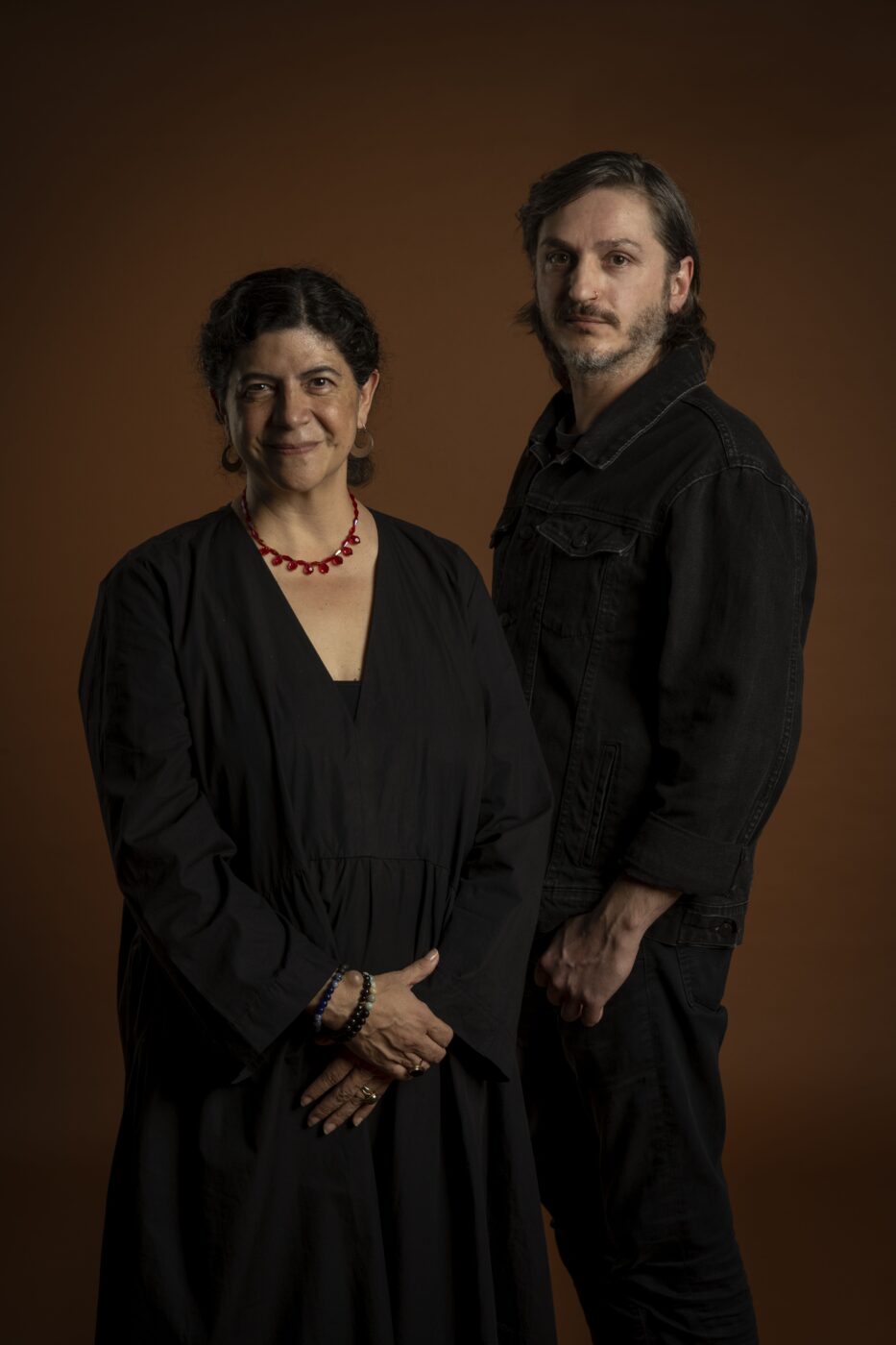
Doclisboa – Internacional Film Festival
October 17 to 27
The 22nd edition of Doclisboa, the first under the direction of Mexican producer Paula Astorga, presents a programme that promotes dialogue between present, past and future, allowing a series of reflections on current cinema. Being at the helm of Doc “is a great emotion and it was a gratifying surprise to direct a festival that is very well positioned internationally and is highly anticipated by Lisbon residents”, highlights Astorga.
From the programme, programmer Luca D’Introno highlights two retrospectives: one dedicated to Mexican filmmaker Paul Leduc (1942-2020), which opens with the film Reed: Insurgent Mexico, a unique gem discovered at Cinemateca Portuguesa; and another, curated by Jean-Pierre Rehm “which reflects on modernism thinking about the future, looking at the past”.
It is also worth highlighting the opening and closing films: Semper, the most recent work by Luciana Fina, and The Day I Met You, by Brazilian filmmaker André Novais Oliveira.
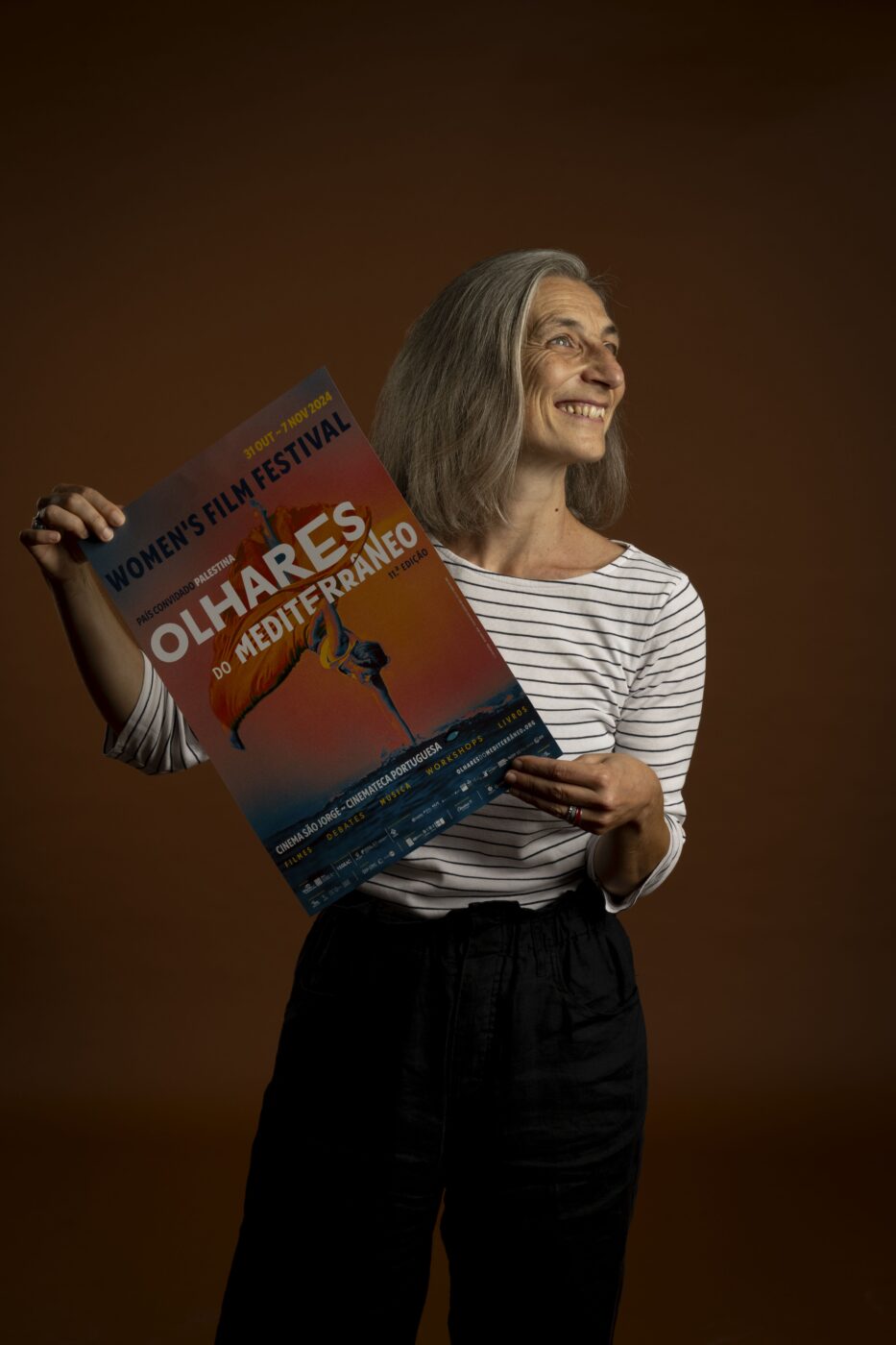
Olhares do Mediterrâneo – Women’s Film Festival
October 31 to November 7
Cinema made by women from Mediterranean countries is back in the 11th edition of Olhares do Mediterrâneo. This year’s theme, Revolution and Everyday Life, seeks, in the words of Silvia Di Marco, “to emphasize that the revolution is not an event closed in time, but that it continues and is renewed. On the one hand, because transformations are necessary, on the other, because no progress is guaranteed.” Demonstrating that, as Natália Correia would say, “culture is what transforms mentalities” is another idea that the festival promotes.
In this sense, the world premiere of A Mulher que Morreu de Pé, by Rosa Coutinho Cabral, stands out, precisely about Natália Correia, a woman who is an unavoidable figure in the fight for freedom. Also noteworthy is the guest country, Palestine, which is honored with a retrospective, at Cinemateca Portuguesa, dedicated to female directors from the Palestinian diaspora. Final note for the opening film, which serves as the theme for the retrospective: The Teacher, by the British-Palestinian, Farah Nabulsi.
For the (re)opening day, Gulbenkian prepared an extensive and varied programme that includes performances, conversations, workshops and five exhibitions. Some of these exhibitions open new spaces at CAM.
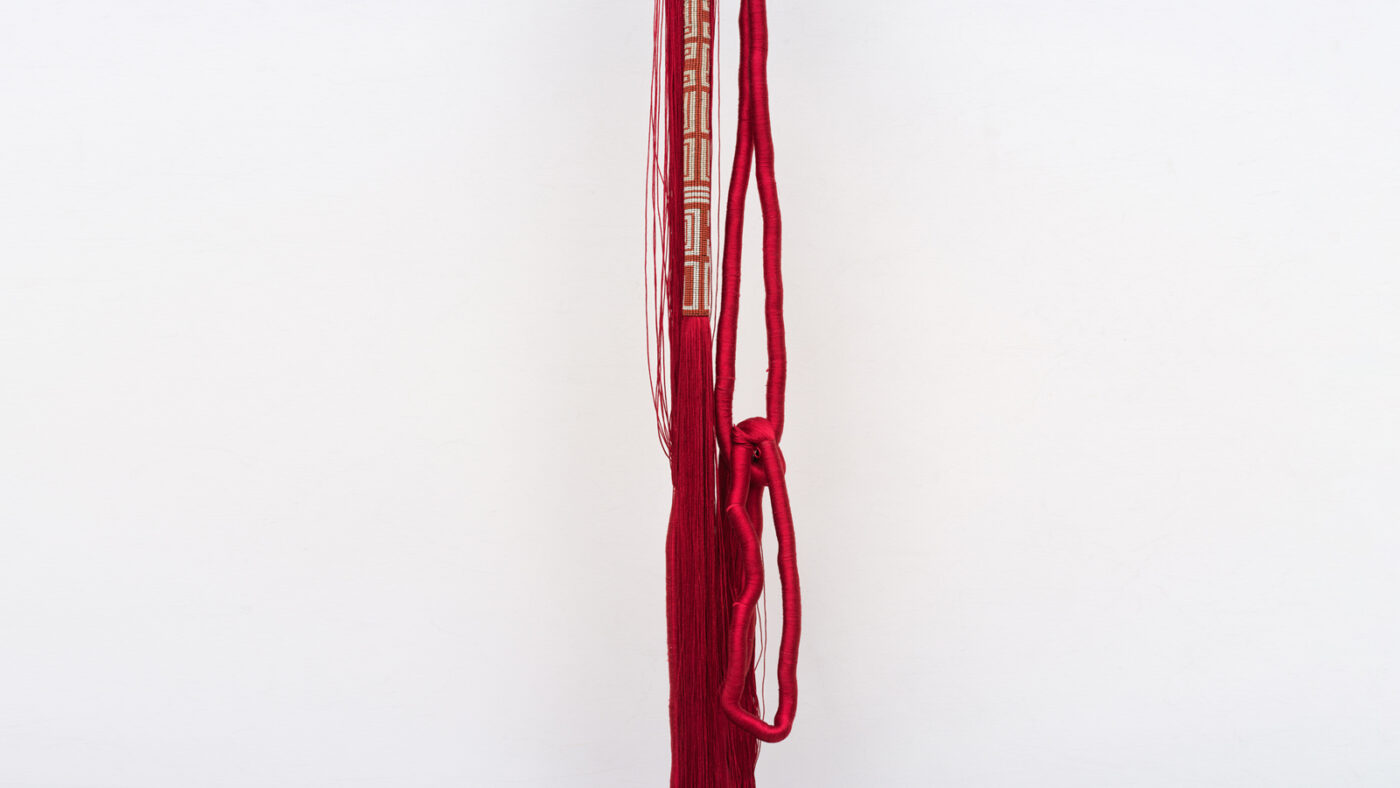
Leonor Antunes
Mezzanine e Nave/Sep 21 to Feb 17
Leonor Antunes takes to the main gallery the constant inequality of leonor’s days, an immersive installation that responds to the architectural specificity of the building. The exhibition, which has as its starting point an investigation into the works and trajectories of female artists, determining figures of the modernist movement made invisible by a history marked by inequalities, includes a wide selection of works by female artists from the CAM Collection.
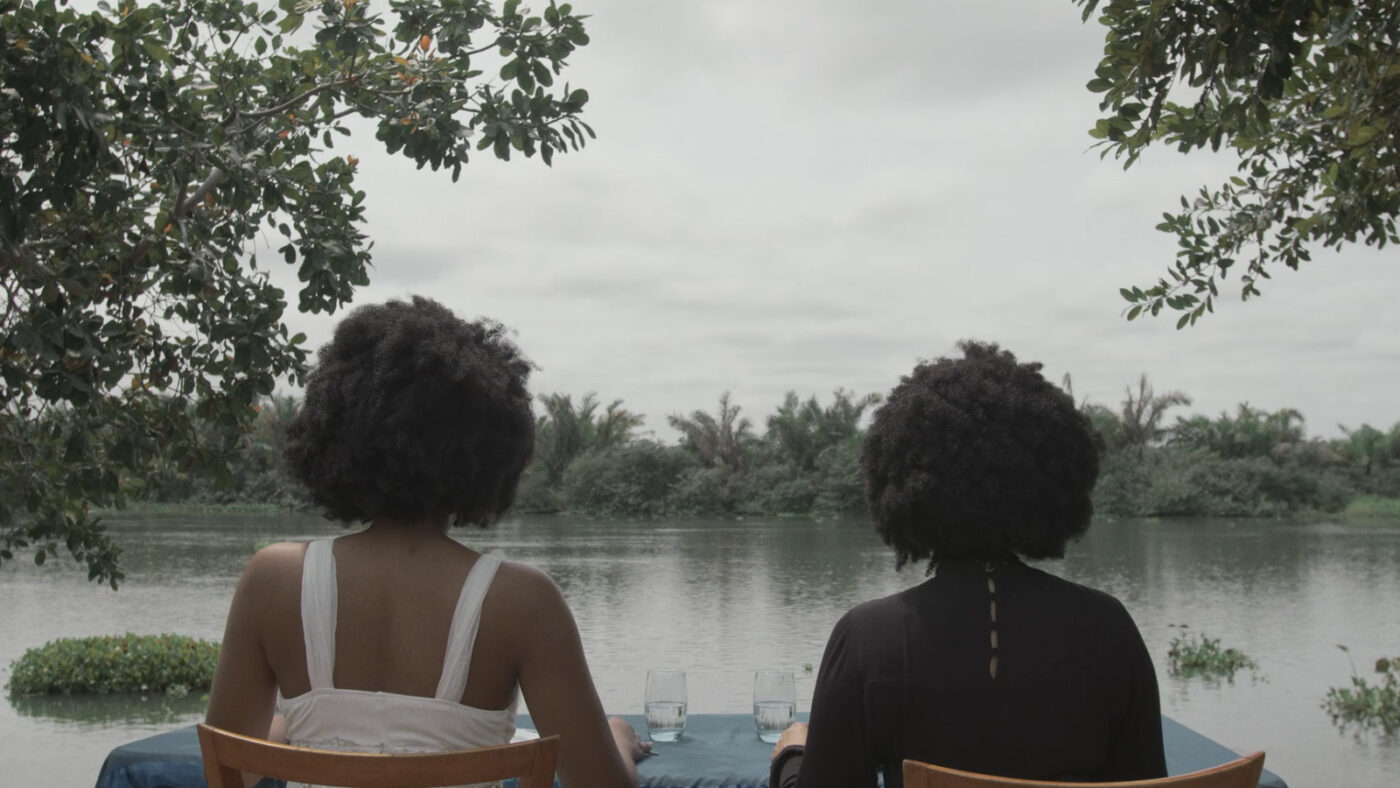
Tide Line. CAM Collection
Collection Gallery / Sep 21 to May 11
Tide Line starts from the Revolution of April 25 1974 to reach the present day, reflecting on the ongoing revolutions, most importantly those related to the state of the planet. Of the approximately 80 works on display, which includes paintings, drawings, film, video, photography, sculptures and installations, many are recent acquisitions never before shown at CAM, by artists such as Mónica de Miranda, Filipa César, Graça Pereira Coutinho, and Paulo Nozolino. The artist Gabriel Abrantes presents a new video work commissioned by CAM for this exhibition.
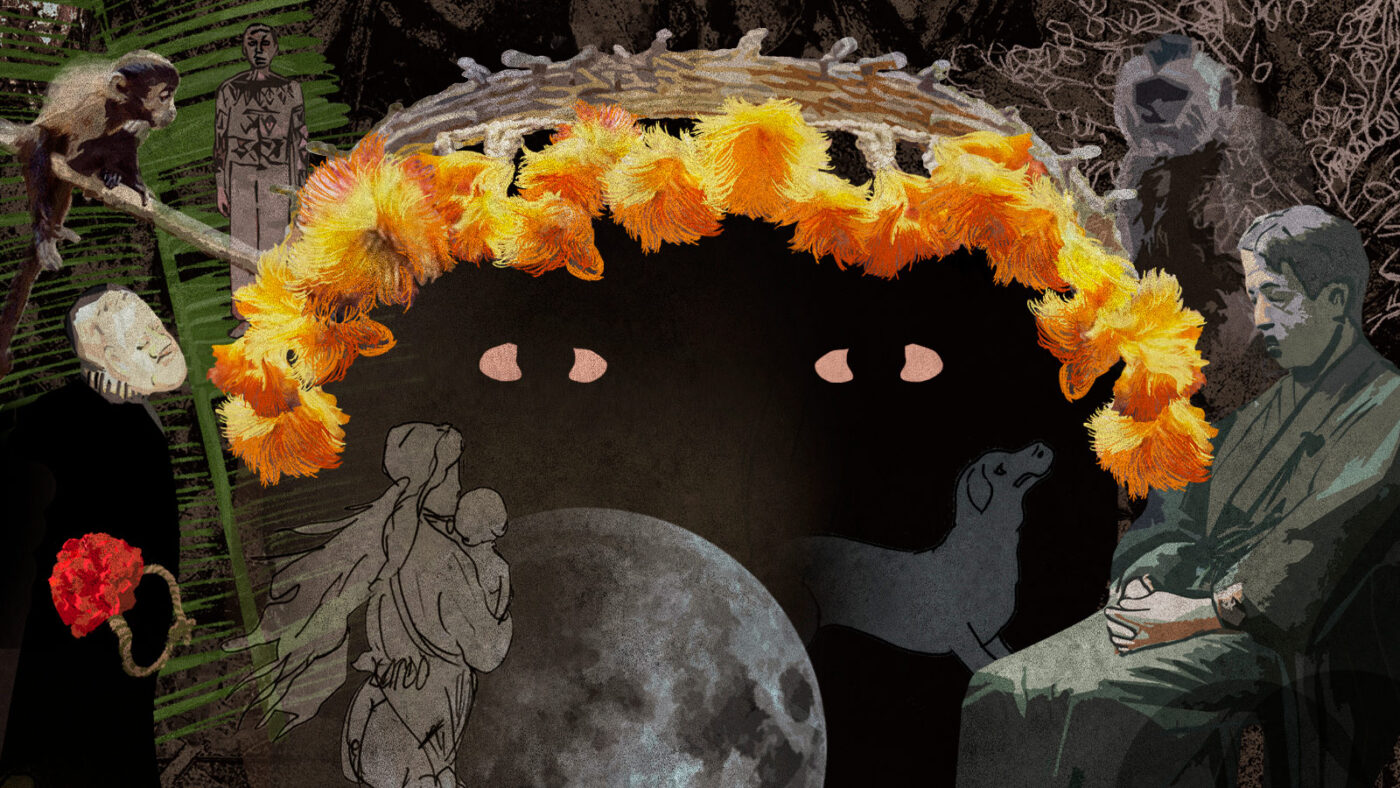
The Voice of Inconstant Savage, by Yasuhiro Morinaga
Sound Room / Sep 21 to Jan 13
The Sound Room receives a multifaceted, polyphonic and immersive sound installation by Yasuhiro Morinaga, that juxtaposes a recitation based on a Portuguese missionary report in the 16th century, a chant of the ‘Kakure-Kirishitan’s Oratio’, which is rooted in Nagasaki Prefecture, a singing of the Karawara spirits of the indigenous Awá people living in the Amazon rainforest, and a chorus of Western Gregorian chant.
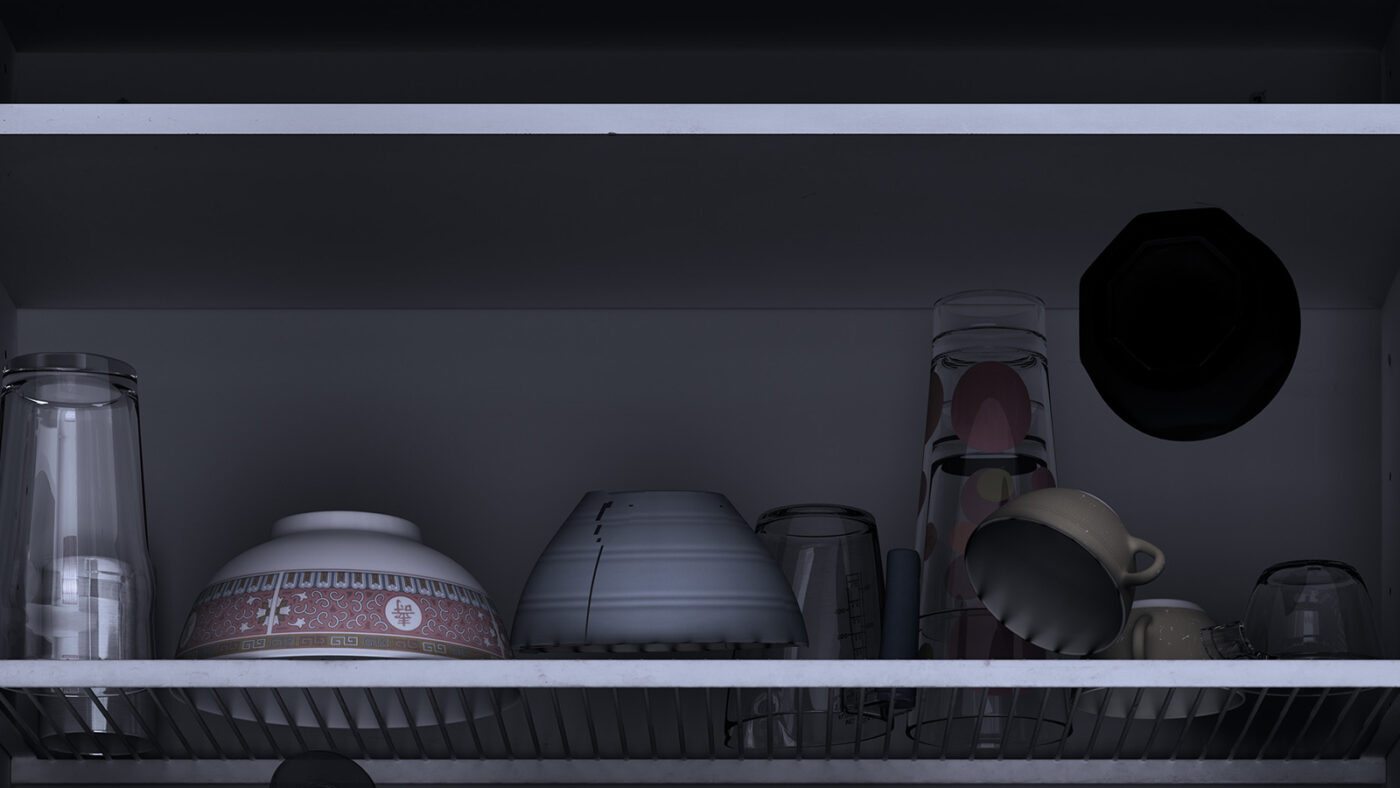
M5A5, by Go Watanabe
Project Space /Sep 21 to Nov 4
M5A5 is a site-specific installation presenting impactful large-scale video work, where four large projected images are carefully placed in the exhibition room, depicting a motif of tableware on shelves that slowly shift and collapse. plays with audience’s expectations regarding authenticity and deception. With M5A5 Go Watanabe raises questions concerning our perception of reality, through distorted 3DCG images of everyday objects, in an extreme slow motion sensory experience.
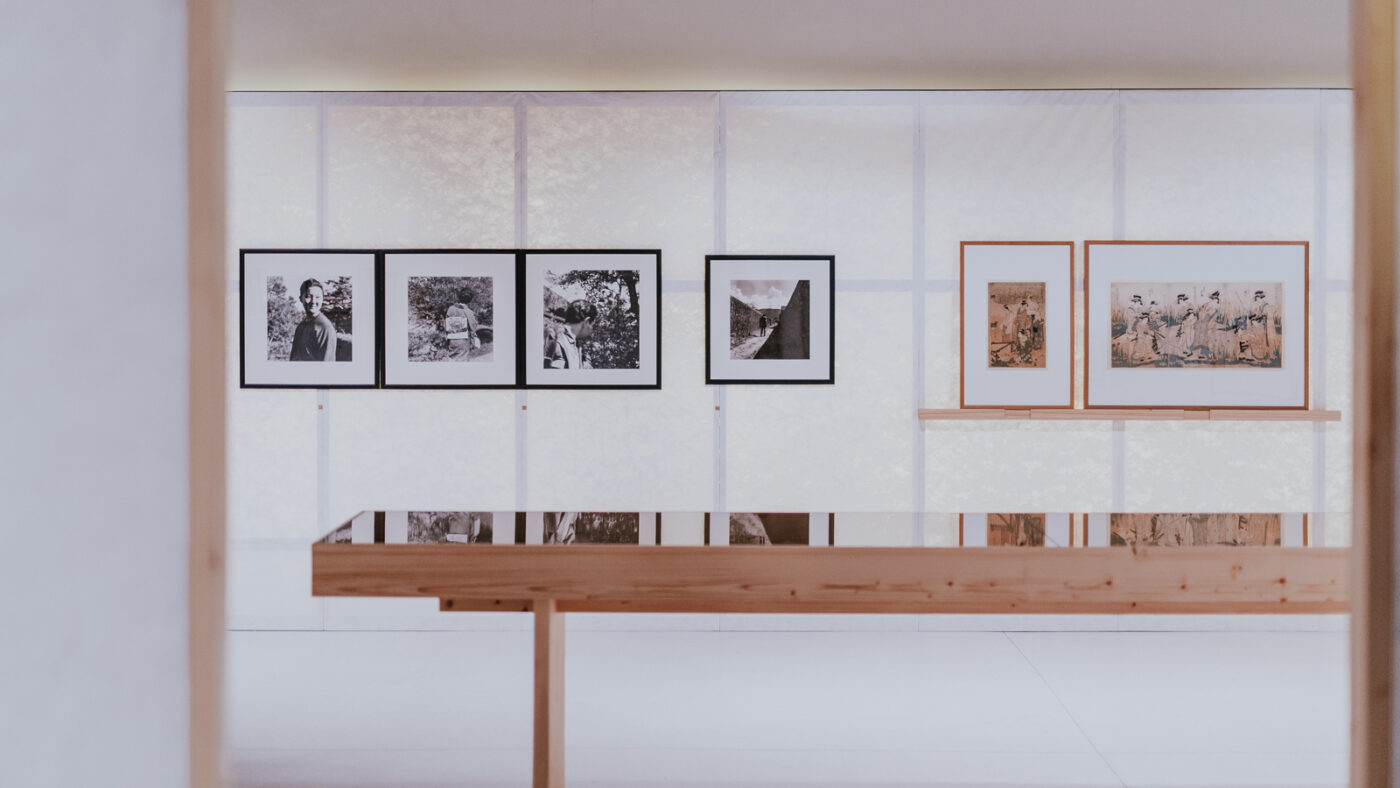
The Occidental Calligrapher. Fernando Lemos and Japan
Engawa Space /Sep 21 to Jan 20
In The Occidental Calligrapher. Fernando Lemos and Japan, the Portuguese-Brazilian multidisciplinary artist explores his relationship with the Land of the rising sun in the 1960’s. Many of the photographs on display were taken during Fernando Lemos’s stay in Japan, where he arrived for the first time on a Gulbenkian Foundation scholarship, and are testimony to the seminal influence of Japanese culture on his artistic practice. His drawings and photographs on display are presented alongside his works in other media, works by other artists from the CAM collection, and with Japanese prints from the Gulbenkian Museum collection.
A living legend of contemporary theater, the North American master Robert Wilson returns to Lisbon next year with PESSOA – Since I’ve Been Me, an evocation of the different atmospheres of the works and heteronyms of the Portuguese poet Fernando Pessoa, born very near Teatro São Luiz, in Largo de São Carlos.
Co-production between Lisbon’s municipal theater, the Florentine Teatro della Pergola and the Parisian Théâtre de la Ville, this “last rêverie” by Bob Wilson, as artistic director Miguel Loureiro calls it, has dramaturgy by Darryl Pinckney – Wilson’s regular collaborator, author of the magnificent Mary said what she said, a show that marked the 2019 edition of Almada Festival – and features an international cast including actress Maria de Medeiros. These ingredients make PESSOA – Since I’ve Been Me one of the most anticipated shows of the next season and, since there are only two performances (March 7th and 8th), judging by Wilson’s theater’s previous visits to Portugal, tickets tend to sell out fast.
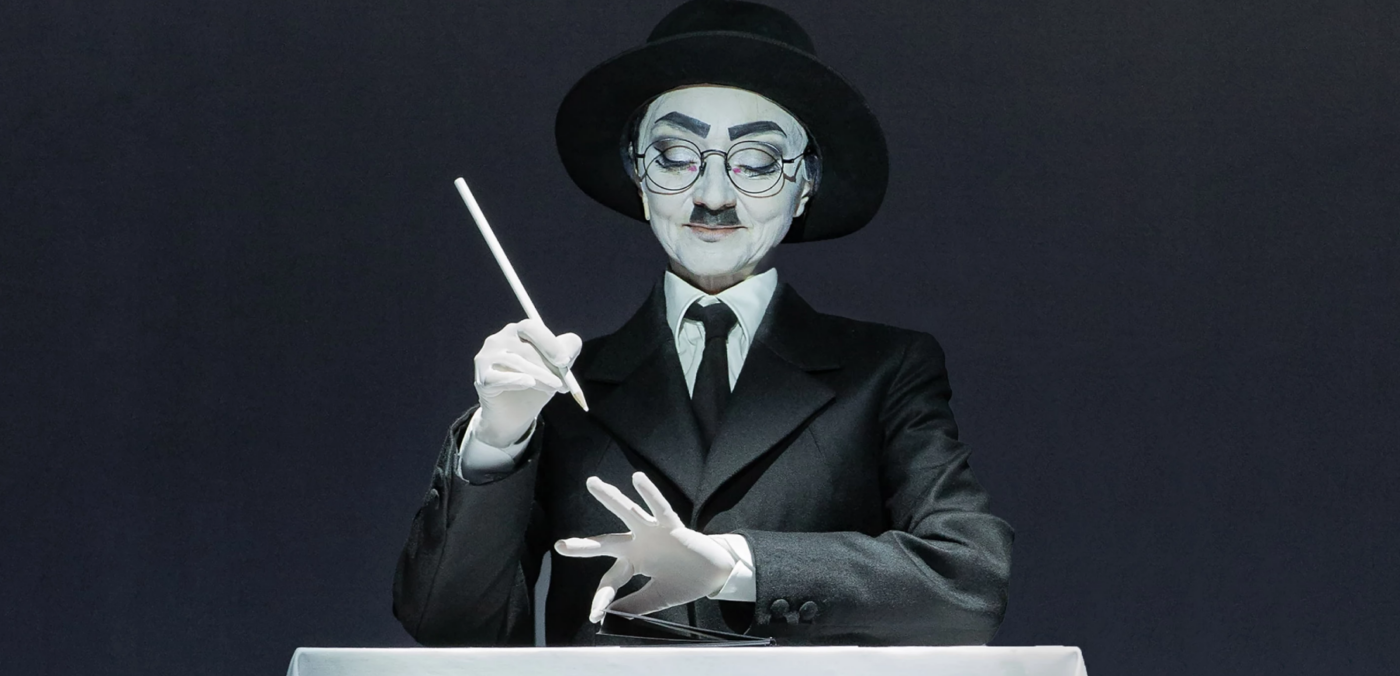
However, São Luiz’s season is far from being limited to this event. There are many theater proposals that the 2024/2025 season lists, starting in September, when Ivo Alexandre presents his vision of Amedée ou Como Desembaraçar-se (from 20 to 29), a landmark in the theater of the absurd authored by the French-Romanian playwrighter, Eugène Ionesco.
The great authors are, in fact, highlighted, with Arthur Miller and As Bruxas de Salem, directed by Nuno Cardoso (December 13 to 15 ); Shakespeare by Miguel Moreira and Útero, with Hamlet – L’ Ange du Bizarre (December 19 to 22); Nathalie Sarraute and the plays Por tudo e por nada and Aqui está ela staged by Carla Bolito, in a show entitled Tudo A Que Se Chama Nada (11 to 26 January); Heiner Müller and Macbeth, according to Paulo Castro, Portuguese director residing in Australia back in Lisbon (February 14 to 23); or Heinrich Von Kleist by Maria Duarte, in a creation without a definitive title (March 22 to 30). Closing the season, Jean Paul Bucchieri brings Livro XI das Confissões de Santo Agostinho to the stage, with Bárbara Branco, Cláudio da Silva, Maria Arriaga and Pedro Lacerda in the cast (June 28 to July 5); and Renata Portas stages Seneca’s version of The Trojan Women (July 10 to 13).
Still in the field of theater, Teresa Sobral directs Class Enemy, a play from the late 1970s by British Nigel Williams (October 12 to 27); Cucha Carvalheiro celebrates the 30th anniversary of Escola de Mulheres with the staging of a new piece by Ana Lázaro entitled Deseja-se Fernanda!, dedicated to the founder of that company, Fernanda Lapa (March 15 to 23); and Assédio, a company from Porto, presents a reflection on the colonial war, with A Tragédia de Aristides Inhassoro, by Pedro Galiza (April 24 to 27). The programme also includes creations by Hotel Europa (Urgência Climática), Raquel André (Belonging / E di / Pertenencia / Zugehörigkeit / Pertença / 絆), Os Possessos (Last Call), Lígia Soares (Romance), Marco Paiva (A Tempo) e Miguel Graça (Killer Joe). The Alkantara and FIMFA Lx festivals will take place on São Luiz stages, as usual.
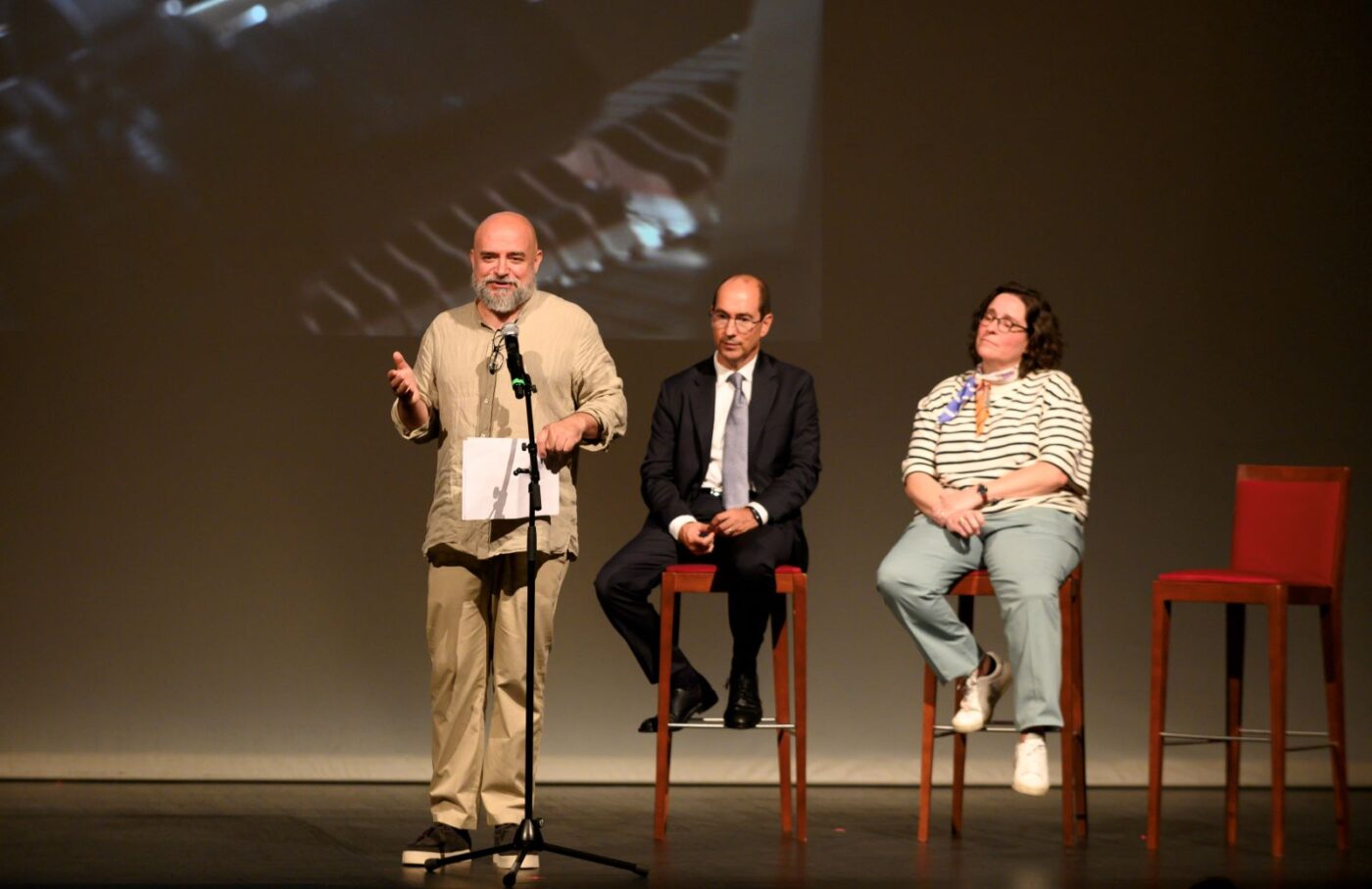
Dance and performance are also very important. For the season, Miguel Loureiro begins, in September, to focus on a double programme with two shows by the collective Dançando com a Diferença – Blasons, by François Chaignaud, premiered in 2022, and Doesdicon, created by Tânia Carvalho in 2017 (19 to 21); and, again, Tânia Carvalho, but this time alongside Matthieu Ehrlacher, in the project that the duo has been developing since 2021, Papillons d’éternité, with the play Nymphalis Antiopa, created and performed by both.
In the coming months, marking the city’s cultural agenda are Rui Horta (the choreographer signs Glimmer with Micro Audio Waves, a musical, performance and multimedia show, with the participation of Gaya de Medeiros), Catarina Miranda (Atsumori), Vânia Rovisco (No Corpo: Assim se Conhece o Mundo), Filipa Francisco and Bruno Cochat (NU MEIO and NU MEIO Comvida, with participations by Félix Lozano, Sónia Batista, Margarida Mestre, Miguel Pereira and Carlota Lagido), Circolando (OU) and Olga Roriz (O Salvado). In performance, highlights include Ritó Natálio, with Spillovers, from Lesbian peoples: material for a dictionary, by Monique Wittig and Sande Zeig; the return of Romain Beltrão Teule, with Dobra; and e(u)co(m)lógica by José Laginha, a creation for young people that combines the climate crisis with the functioning of the human brain.
A Place for Music
From the first minute as artistic director of Teatro São Luiz, Miguel Loureiro made a strong commitment to music programming. The upcoming season places the municipal theater at the epicenter of the offer, and music in parity with the performing arts. An obvious sign is that the season opens “with two concerts in a different format” by Júlio Resende. The talented pianist presents, on September 13th, Fado Jazz – Filhos da Revolução, and the following night, alongside ALMO (tenor Paulo Lapa and baritone Tiago Matos), a surprising journey through fado and the Portuguese Songbook. This weekend, on the night of Friday the 13, musician, choreographer, dancer and DJ Faizal Mostrixx, pioneer of tribal electronics, is “master of ceremonies” at the opening party of the season.
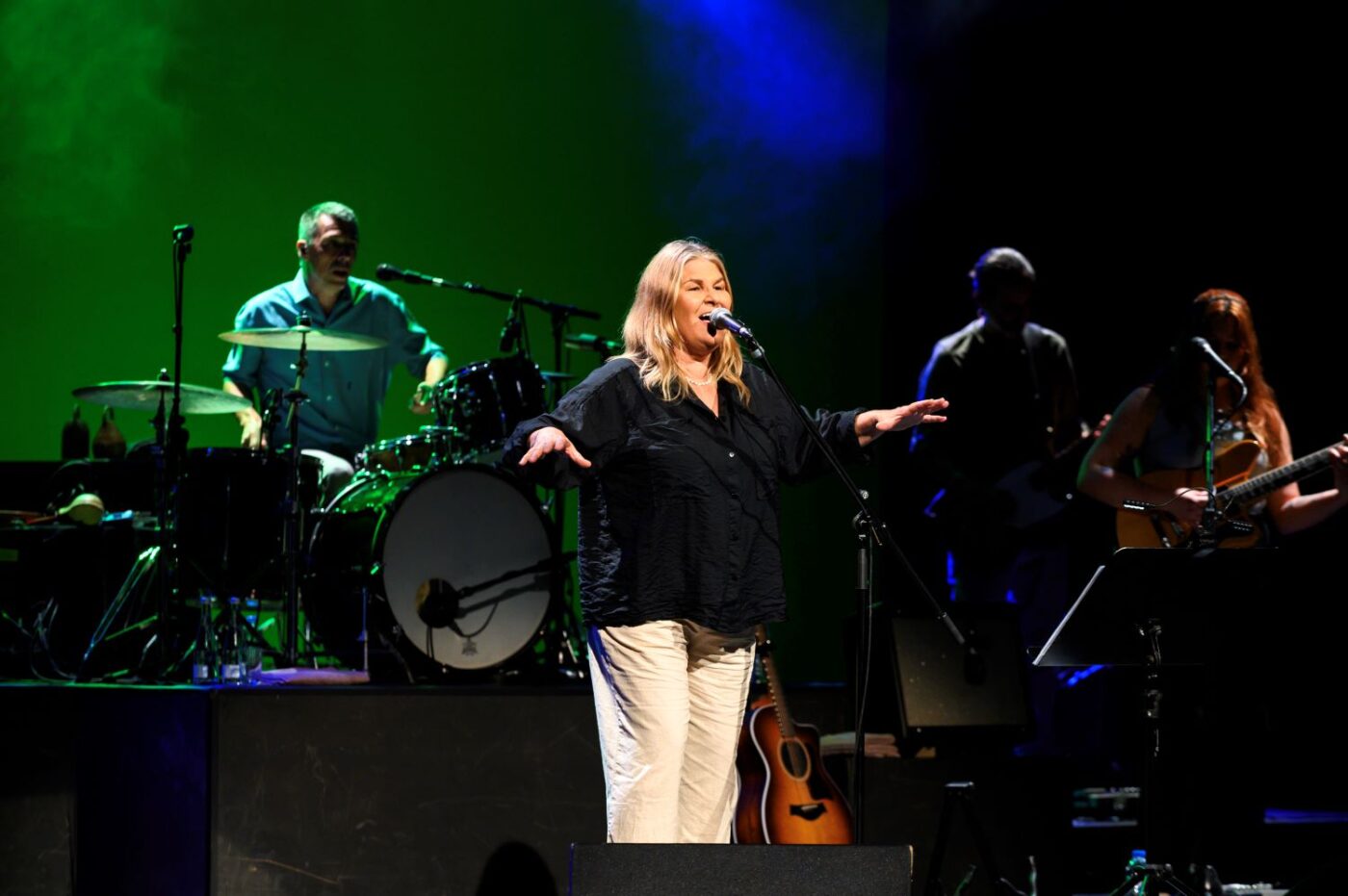
Until the end of the year there are many shows scheduled like MirAnda (September 24), Samuel Úria (October 8), Rafael Riqueni (October 11), Maria João & André Mehmari (November 8), Tony Ann (November 9), Rocío Márquez & Bronquio (November 10), Lena d’Água (November 12), Sara Correia (November 25), LINA_ (November 27), Cara de Espelho (November 29), Cristina White (December 5) and Kavita Shah (December 20). Besides a great concert commemorating the centenary of Amílcar Cabral (November 6) and the last two moments of Foco Maestro cycle with Martim Sousa Tavares (in December), World Music Day (October 1) is celebrated with the show Cantexto, dedicated to Alentejo singing, with the presence of eight groups of singers.
With the closure of São Carlos National Theater for improvement works, São Luiz hosts some of the shows included in the neighboring theater’s programming, namely in the area of chamber music and opera.
In 2025, the three rooms of São Luiz will welcome Pedro Jóia, Orquestra Metropolitana de Lisboa, Kolme, Nuno Vieira de Almeida (with Rita Blanco), Orquestra do Hot Clube Portugal or Nuno Côrte-Real.
The season also has an extended offer in the field of thought and science, with emphasis on another edition of the cycle O Nosso Futuro Ainda Humano, which opens on September 17 with the Basque philosopher and essayist Daniel Innerarity.
In the field of literature, it is worth highlighting the staged reading of O Mundo Começou às 5 e 47 to mark Luiz Francisco Rebello’s 100th birthday. On September 15, from 4 pm, with Marques d’ Arede, Ivo Alexandre, Marco Mendonça, Álvaro Correia, Cátia Nunes, Diogo Fernandes and Márcia Cardoso, directed by Miguel Sopas.
In November, a sound installation marks the 30th anniversary of Galeria Zé dos Bois and, in 2025, the collective Filho Único proposes a special programme for three days. This, in detail, and everything else, can be consulted on the official website of São Luiz Teatro Municipal.
The requalification project aimed to provide the building with the necessary functional requirements to allow the museum to fully function and, for this reason, it was developed in close coordination between design, museology, architecture and specialty projects. The MUDE building thus returns to being the cultural hub dedicated to all expressions of design, in the historic center of Lisbon, with areas for exhibition, creation, education, study, debate and leisure, meeting, conversation and sharing.
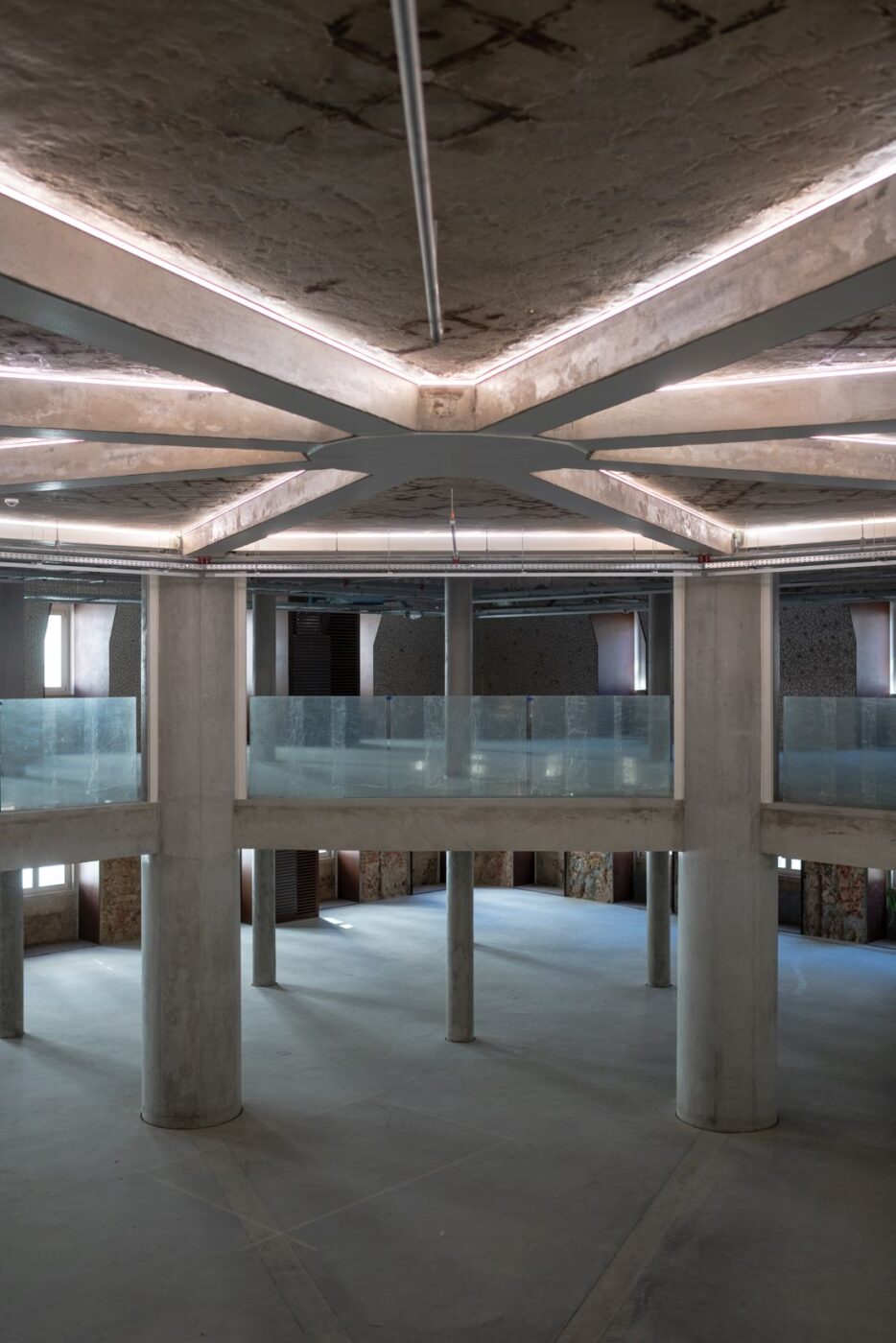
The Exhibitions galleries will occupy the 1st, 2nd, 3rd and 4th floors in open spaces, without partitions or coverings, substantiating the concept of the exhibition as an “open work”, defended for MUDE since 2009. In each new exhibition, the interiors will be changed and experienced in different ways. Between floors 3 and 4, a visual connection was created in the octagon area. MUDE, in this place, will be experienced as a prismatic point of opening and convergence between the observer and the entire museum.
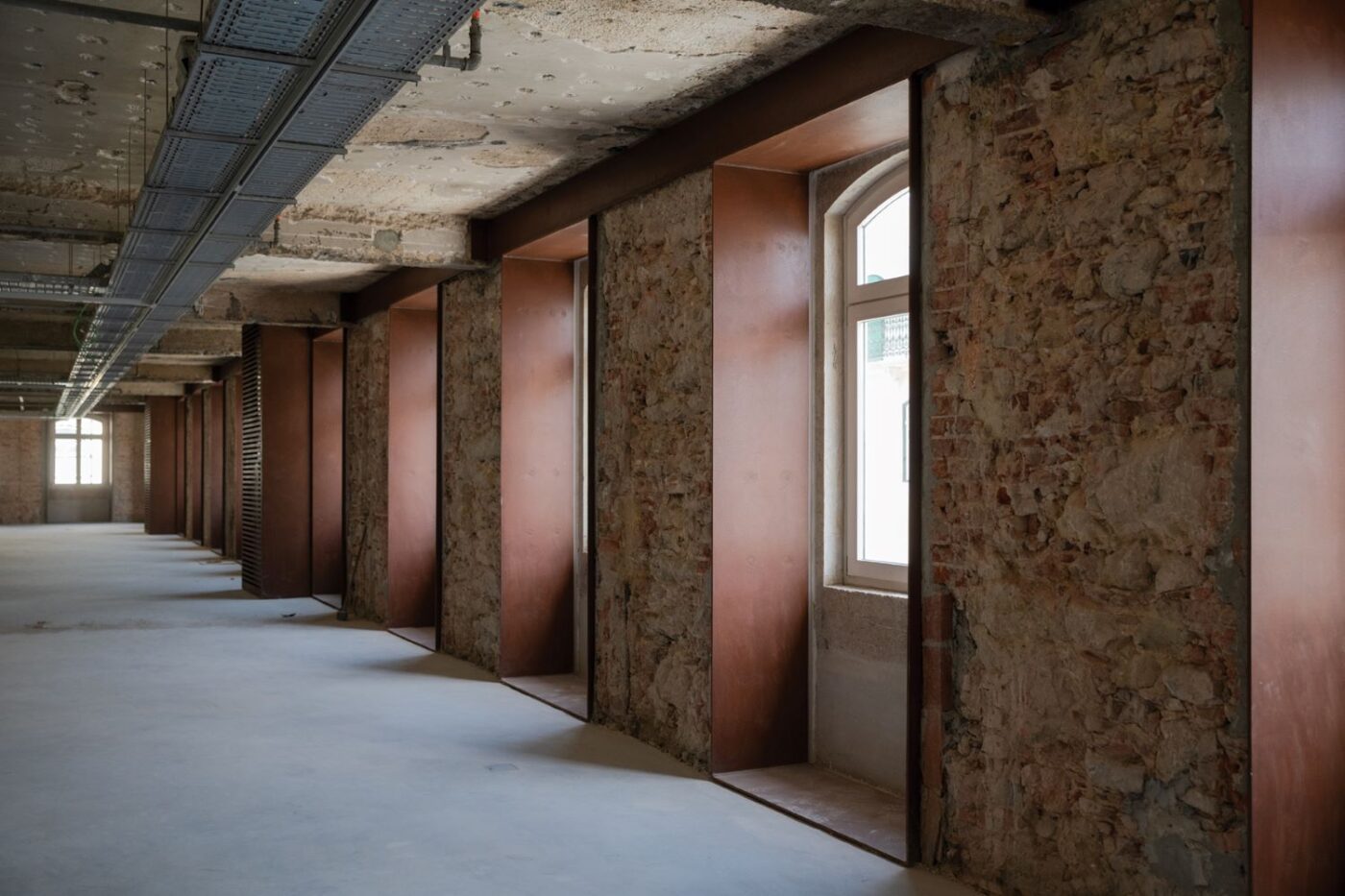
In this requalification of the building, the structural reinforcement solution that ensures its anti-seismic capacity stands out. This process enabled the valorization of pre-existing materials (in particular, brick, concrete and stone) and the different construction techniques applied over time in this location, contributing to the museological intention of transforming the building into a living testimony of design, architecture and engineering.
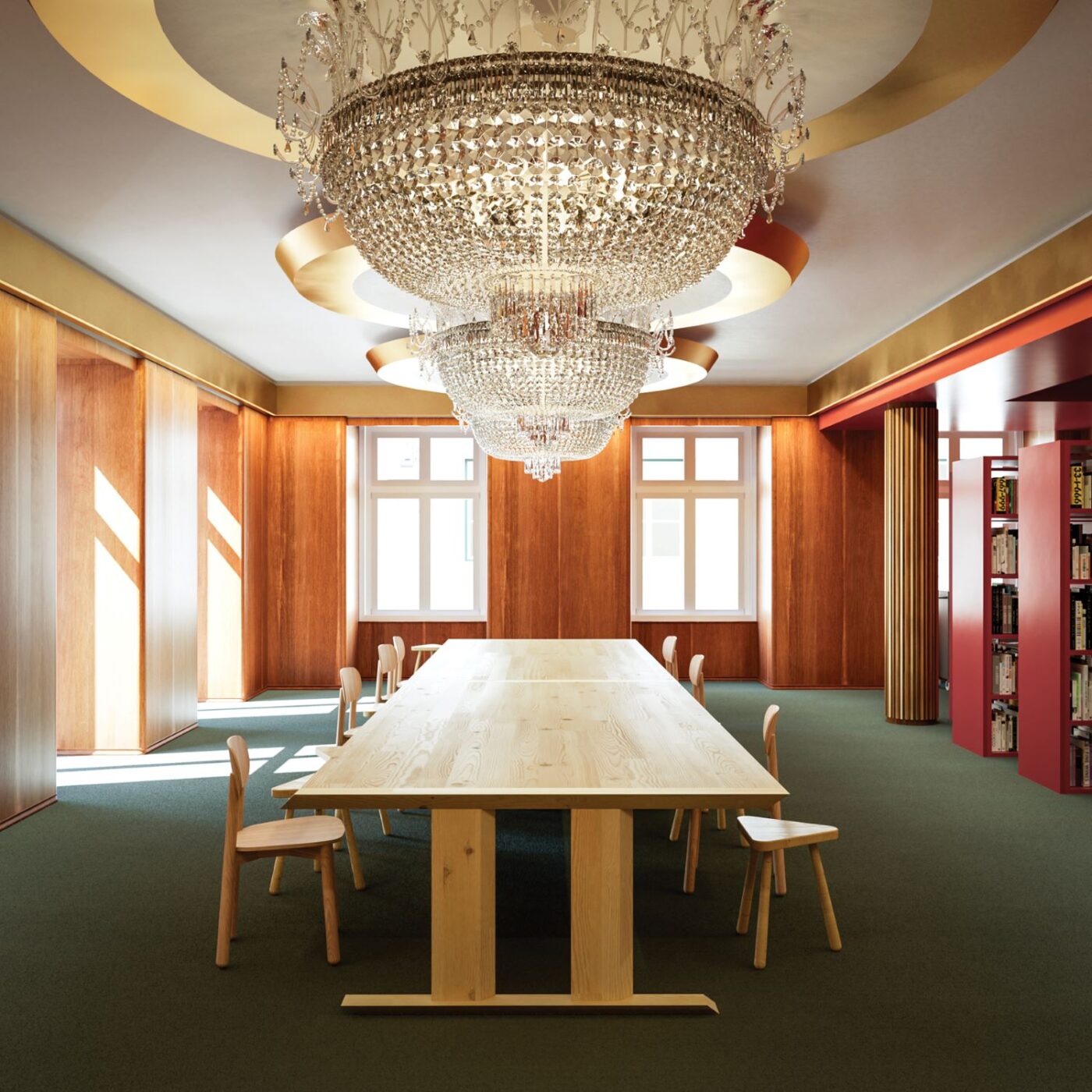
One of the new spaces to be opened to the public is the Design Library, expanded over the last 10 years, and which is part of the MUDE Documentation and Information Center. In terms of furniture, this space follows the general philosophy of privileging local natural raw materials and national production, reinterpreting models that reflect Portuguese know-how and material culture and, above all, guarantee an economy of means, resources and manufacturing techniques, avoiding excess and waste.
All the “sheets” on display feature instant photographs, almost always accompanied by handwritten phrases in the languages the artist knows best, such as English, German, Portuguese or French; newspaper and magazine clippings; advertising flyers; or stamps. For Daniel Blaufuks, keeping the diary became the work of a lifetime.
The artist doubts whether these volumes should be called diaries. He prefers the name “non-diaries”, since “it is not intimate”, one does not learn much about him or his life in those pages.
“In the classic diary, you write ‘I woke up at 10 am’, ‘I went to breakfast’ or ‘I went to the cinema’. There isn’t that there. Every now and then I open the lid on my life a little bit, but I close it again immediately”, he says. It is, rather, a daily work, “because it is a daily exercise, which helps me think about photography. I do one sheet a day”, he adds, remembering that it all started the day Philip Roth, the author of American Pastoral or Of Human Stain, died.
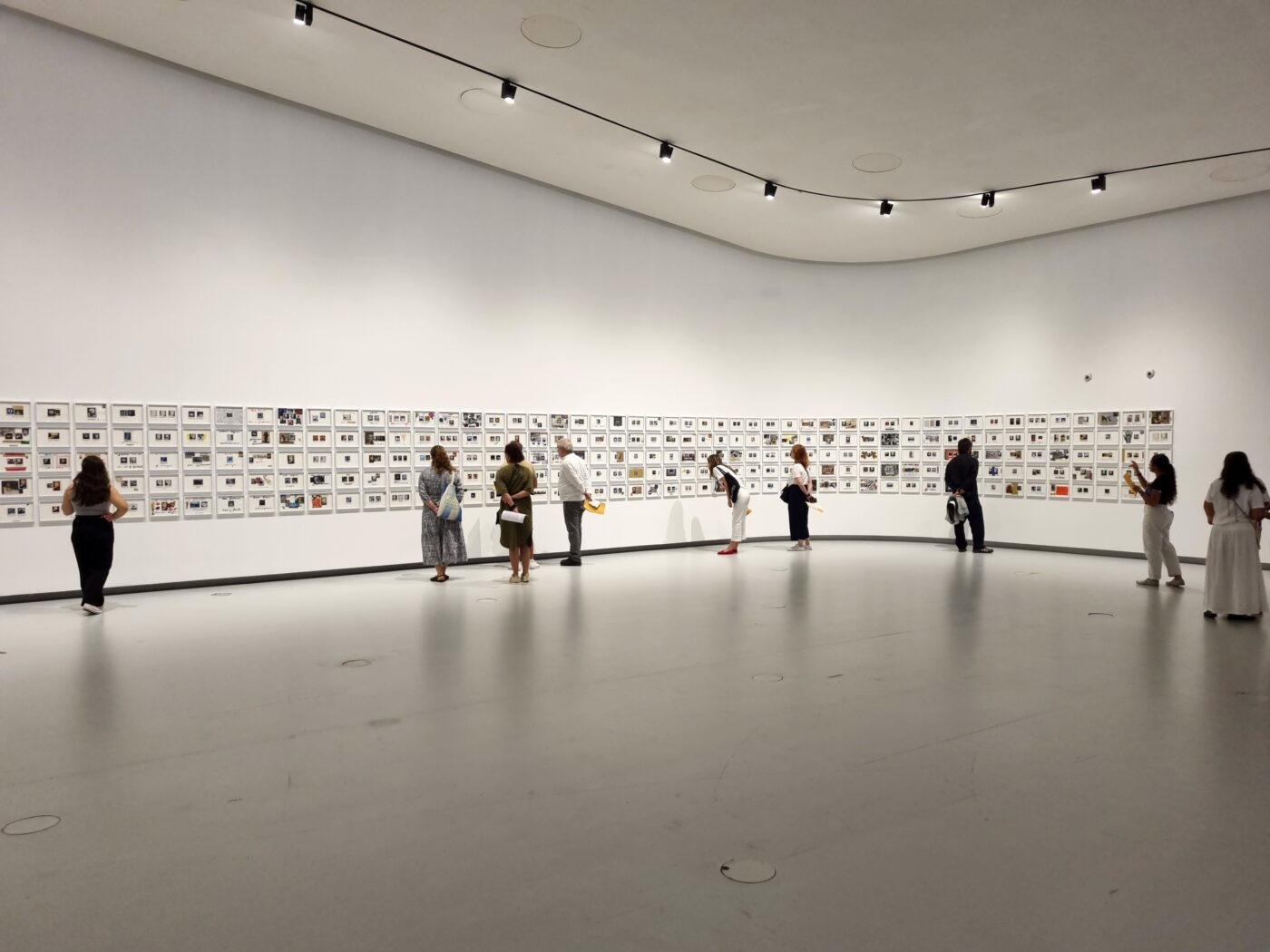
“A chance, happy for me, not for him”, he explains, refusing that it had been a catalytic event. However, it was on that day that it all began, and the first “sheet” of the exhibition is, precisely, the one that reads “Philip Roth is now forever dead”. “I even think he might have liked it!”
Through the gallery
The walls of one of the rooms at MAAT Gallery are filled with frames. If the entire 2003 diary is displayed there, there are also some pages from 2018 to 2022 and many others from the current year. All of them, without exception, present fragments: fragments of his personal life, fragments of things he reads, of things he hears. There are also fragments of conversations and feelings. “That’s the right word: fragments. Each page of this diary is a fragment of my day”, he emphasizes.
In this work that appears to be “instinctive and instantaneous”, the textual notes are not mere captions for the photographs. “Sometimes image and text can collide; other times they can accompany each other. And there are still other times when the text raises more questions than it answers. This means that when I take the photo, I’m not thinking about what I’m going to write. I also happen to know what I’m going to write before I even take the photo. But, in truth, I think that the atmosphere is always the same, that is, on a sadder day, I am sadder and you can feel that in the photograph, as you probably feel in the text that accompanies it. And the same happens on a happier day, like a summer beach day, where everything is perhaps brighter.”

João Pinharanda, curator of the exhibition, says that Blaufuks’ work has always been based “around time and memory, whether family, historical or personal. By exposing his memory, his days and the days of the world intersect.” The photographer who, according to the curator, “reacts to what is around him by fighting the voracious race of time over things”, admits that “a diary is also an act of resistance”. “The day makes sense because I have a sheet to do, which allows me to always have this moment of alignment with everything that happens around me”, he concludes.
The exhibition The Days Are Numbered, by Daniel Blaufuks, can be visited at MAAT – Museum of Art, Architecture and Technology from Wednesday to Monday, until October 7. On September 5, between 3 pm and 6:30 pm, a masterclass will take place with the photographer, followed by a conversation with João Pinharanda. On the occasion of the exhibition, the book Os Dias Está Numerados (ed. Tinta-da-China) is published, for sale in the museum store.
In order to inspire innovative thinking and offer a positive, useful contribution to our experience of living as a community and interacting with the natural world, City Cortex invited six internationally recognized architects and design studios – Diller Scofidio + Renfro, Eduardo Souto de Moura , Gabriel Calatrava, Leong Leong, Sagmeister & Walsh and Yves Béhar – to create eight original cork projects for public and semi-public spaces on both banks of the Tagus river.
Produced by Corticeira Amorim, with the production support of Artworks, curated by Guta Moura Guedes and developed by experimentadesign, City Cortex took as its starting points the parishes of Belém, in Lisbon, and Trafaria, in Almada. The invited studios reinvented and tested the possibilities of Portuguese cork and its processing industry. In addition to exploring the potential of the material itself, this programme also strives for a playful user experience, transforming the communal urban space into a playground, a space for multidisciplinary and multicultural interactions.
To visit this open-air museum, we suggest the following route:
Start in Belém, at Praça do Império. As you cross the Pedestrian tunnel to Padrão dos Descobrimentos, look up and see the first installation by Sagmeister & Walsh (1). Go towards the river and turn right to Espelho d’Água, where you can find another intervention by this duo, floating in the water (2). Next to it is the Museum of Popular Art. Inside you will find the third installation of Sagmeister & Walsh (3). Go back close to the tunnel and, staying on the river side, walk to the MAAT gardens, where there are the installations of Yves Béhar (4), Leong Leong (5) and, a little further on, Souto de Moura (6).
Take the pedestrian bridge on the MAAT roof and then the first exit on the left. Go down the small street and find the garden with interventions by Diller Scofidio + Renfro (7). Continue along Rua da Junqueira, cross the Museum Nacional dos Coches and use its pedestrian bridge to reach the Tagus river bank again. Opposite is the Belém Ferry Terminal: take the boat that takes you to Trafaria to see Gabriel Calatrava’s intervention (8).
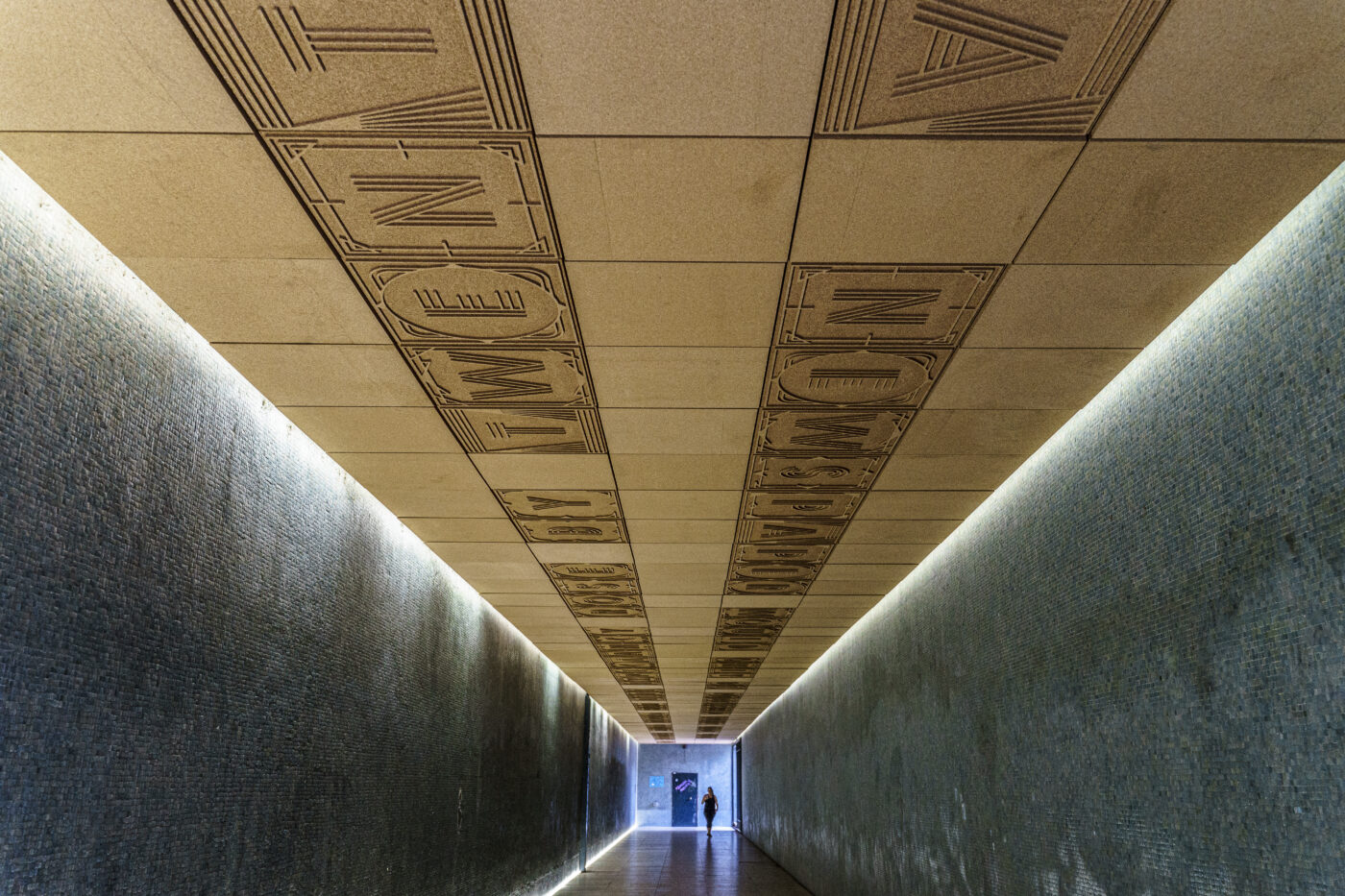
1 – Life Expectancy | Sagmeister & Walsh
Taking advantage of cork’s sound and thermal insulation properties, designers Sagmeister & Walsh designed panels in this material for the tunnel ceiling, transforming the space and providing a better sound atmosphere and aesthetic experience. But there is also a communicational and inspiring aspect to this installation: the phrase that can be read on cork, “if a newspaper came out only every fifty years, it would report on the increase in average life expectancy by twenty years”, refers to one of the positive achievements of the human species.
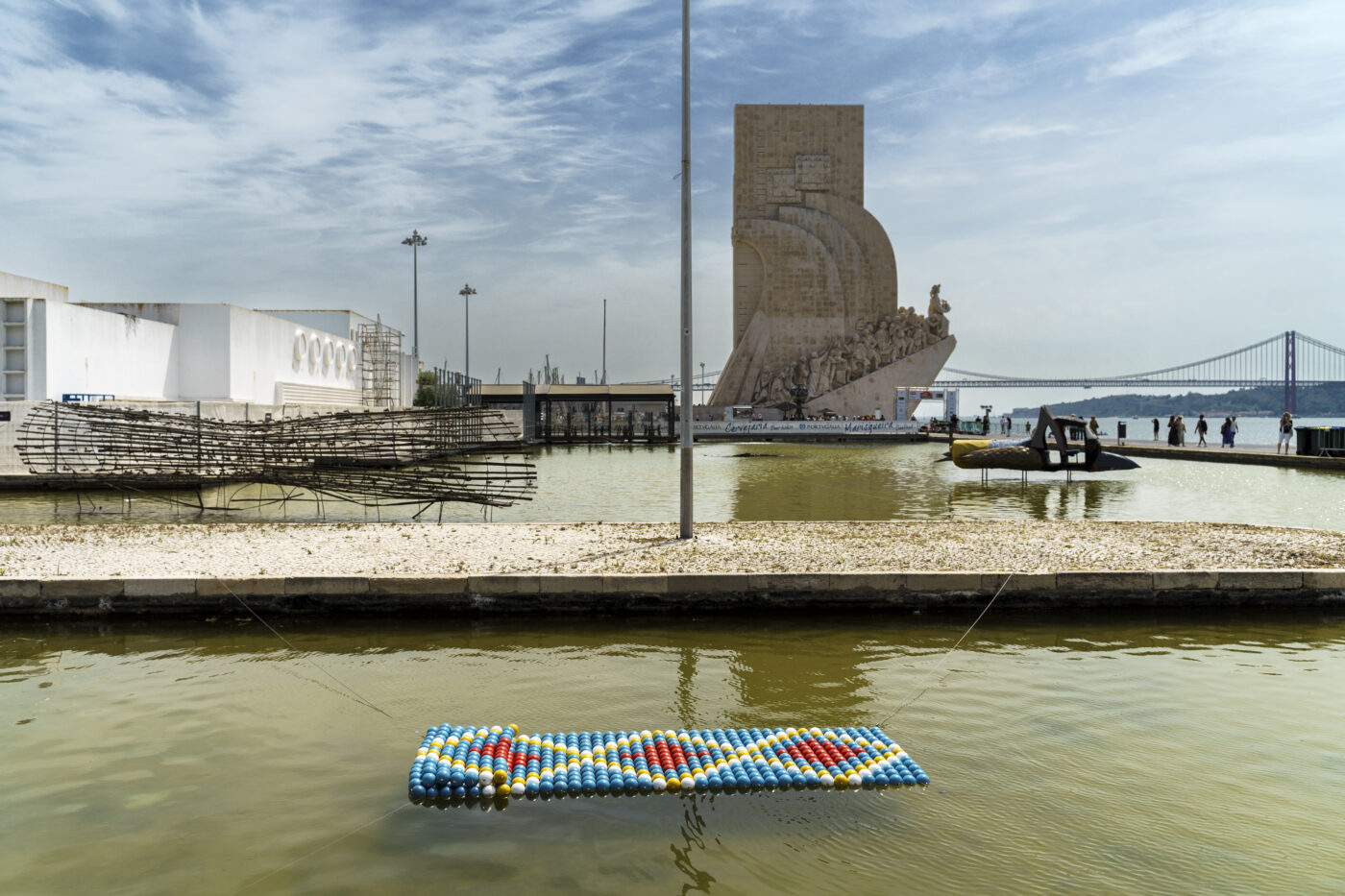
2 – Humpacks | Sagmeister & Walsh
As areas of the city tend to have places to interact with water, the New York designer duo created an ecological floating mattress made from cork spheres and presented as an alternative to plastic mattresses. The color red in this piece represents statistical data on the growth of the global humpback whale population in three years, 2006, 2014 and 2022, in the western South Pacific.
[piece temporarily unavailable due to works on the lake where it is located]
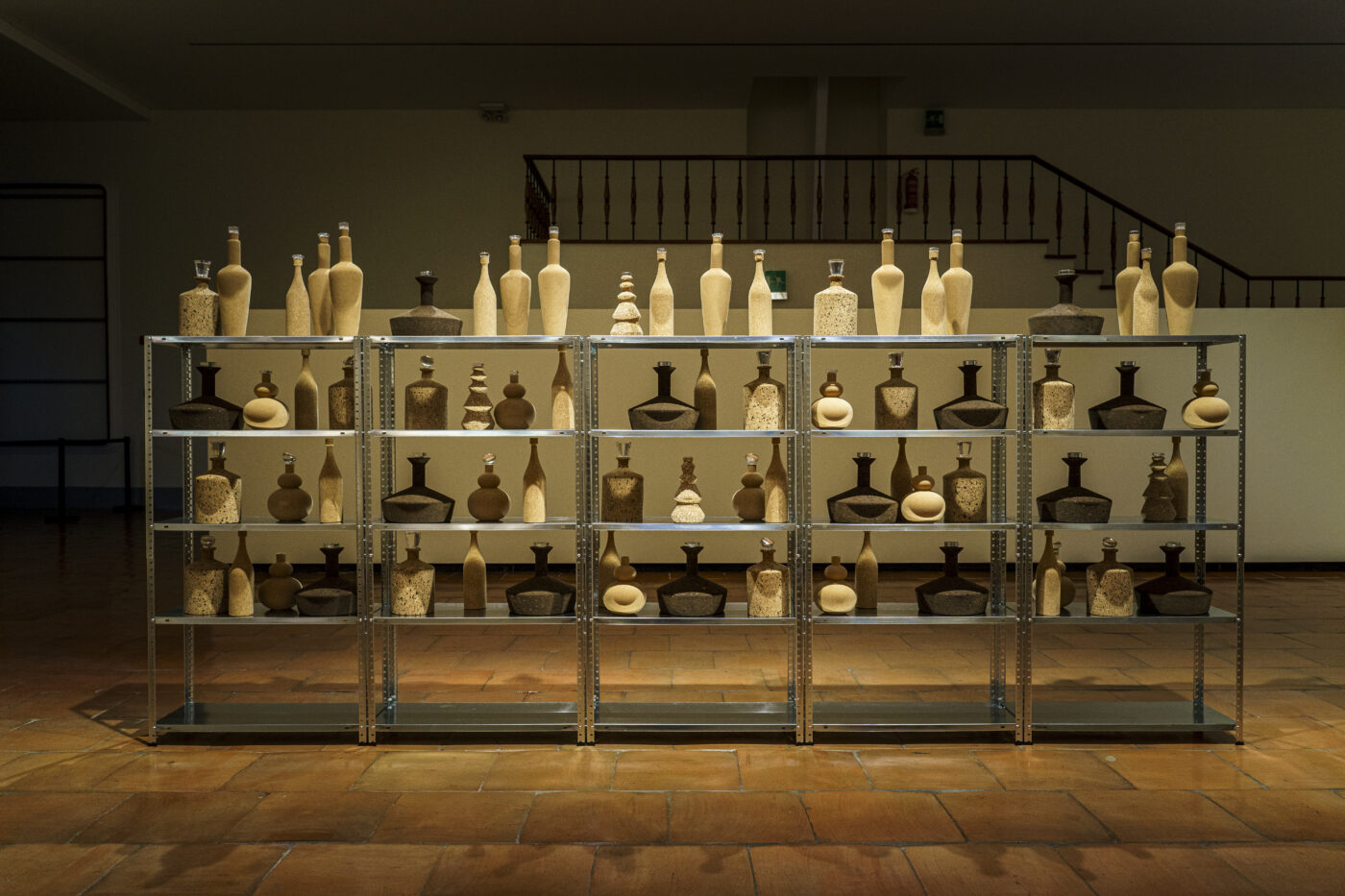
3 – Cork Bottles | Sagmeister & Walsh
Noise pollution in public or semi-public spaces continues to be one of the problems in contemporary cities. Addressing, with a sense of humor, the issue of noise inside a restaurant, the designers created a series of bottle-shaped objects, but inverting the materials – glass is now cork and vice versa. These creations allow you to absorb sound and create acoustic control in these internal spaces.
[the piece can be visited with paid entry at the Museum of Popular Art]
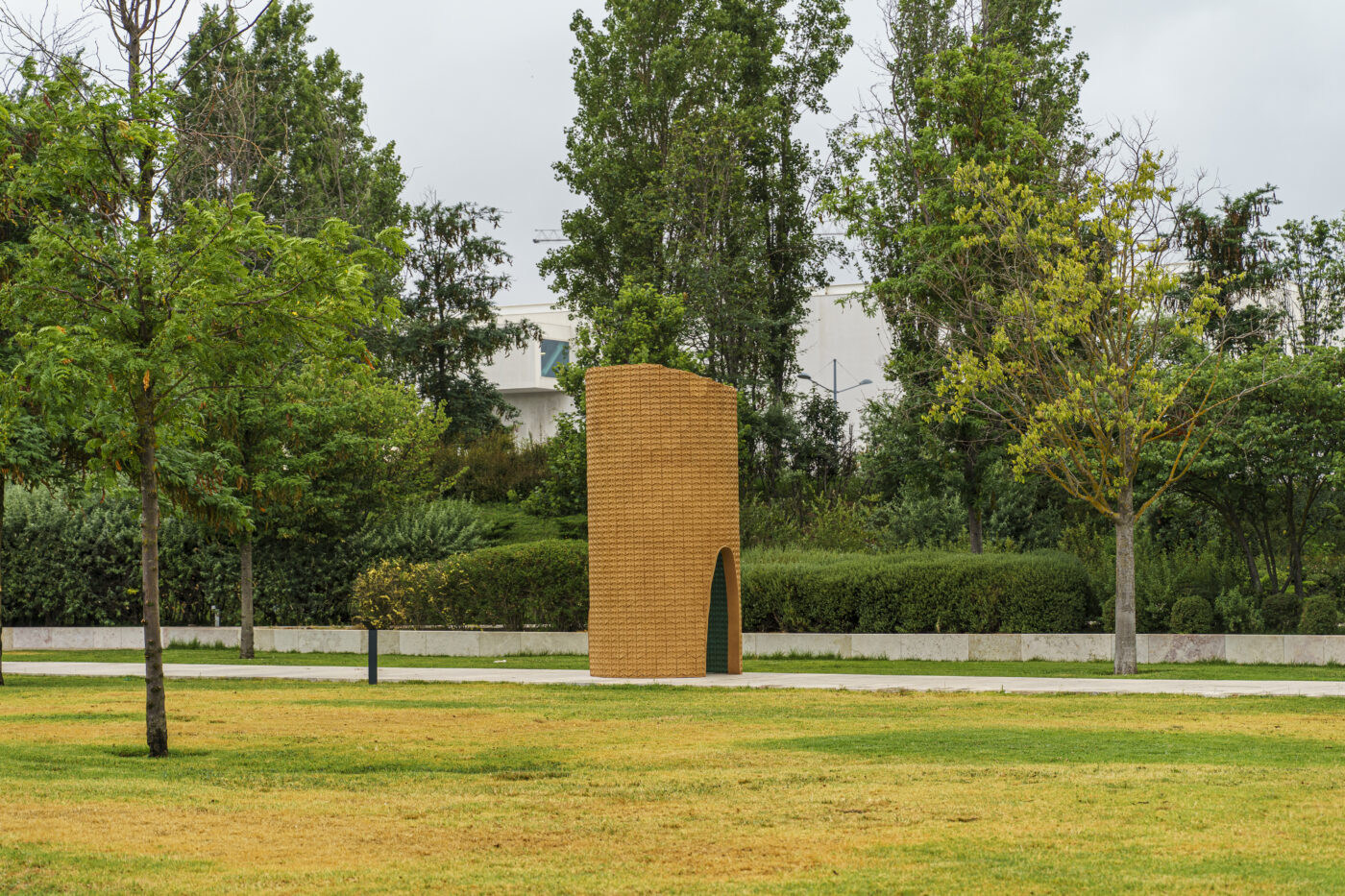
4 – Port_All | Yves Béhar
Inspired by the Belém Tower, Yves Béhar’s installation “is based on the idea of a welcoming reception and a protective space. And cork is the perfect material to express these qualities”, says the Swiss designer. This natural material allows isolation from surrounding sounds, creating an interiorized, calm space, in which materials and form combine to create a welcoming gateway to the city.

5 – Lily Pad | Leong Leong
“Our project reflects on the hypothesis that urban equipment is made from cork. It’s a way of softening the harshness of the city’s landscape, taking into account the different demands of each body to feel comfortable in urban spaces”, says Dominic Leong, from the New York architecture and design studio Leong Leong. Inspired by the idea of the city as a play and recreational space, Lily Pad uses a natural cork agglomerate to create sculptural elements that define a new sensorial and micro-urban landscape for an audience of all ages.
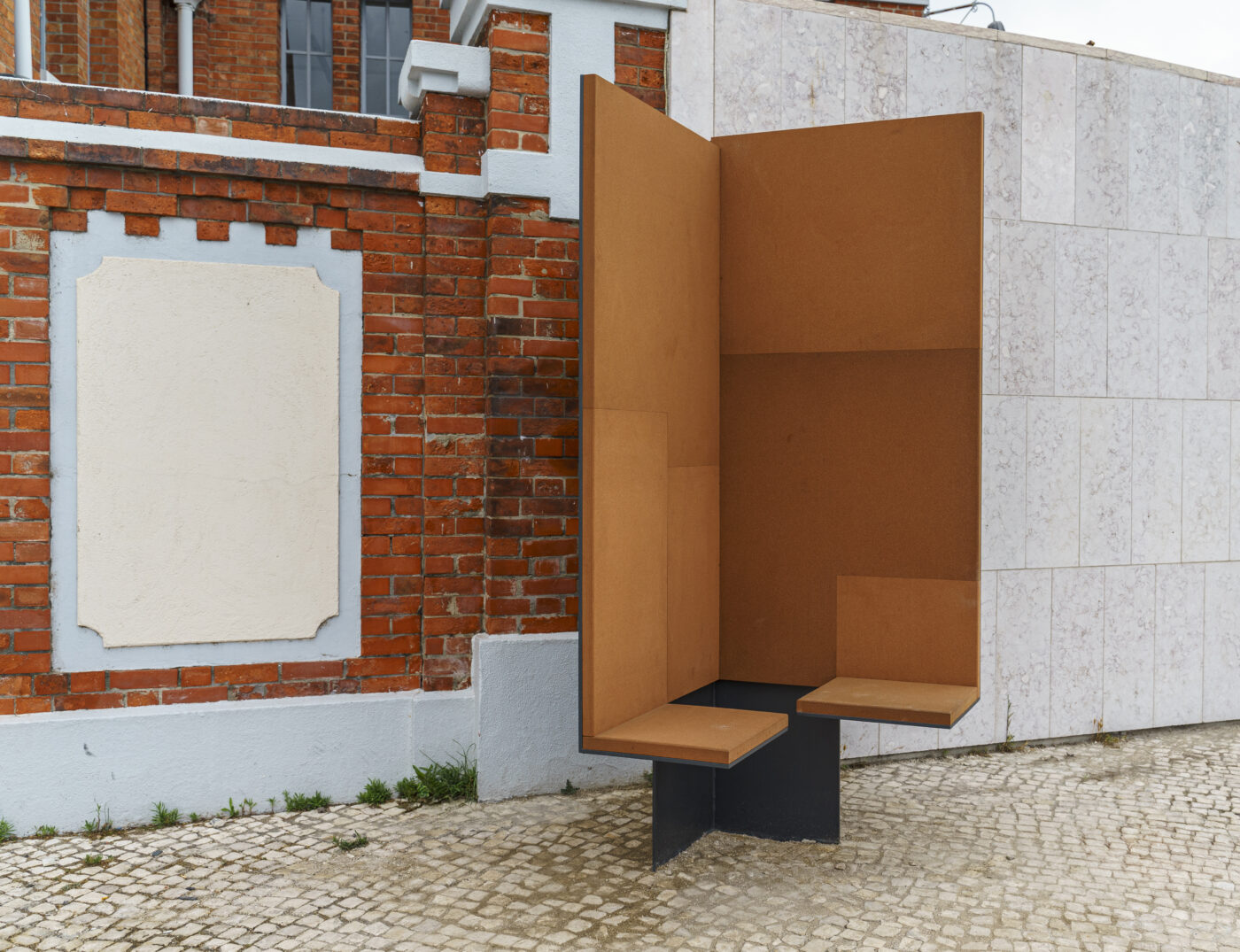
6 – Conversadeira II | Eduardo Souto de Moura
Conversadeira II is a double chair, a place for a conversation or for sharing silence. The Portuguese architect uses cork to create an environment of calm and refuge, enabling a meeting between two individuals and creating an almost private space in a place where hundreds of people pass by. For Souto de Moura, “this prototype will act as a test to see its behavior, which we already know is highly resistant and insulating, against time and use.”
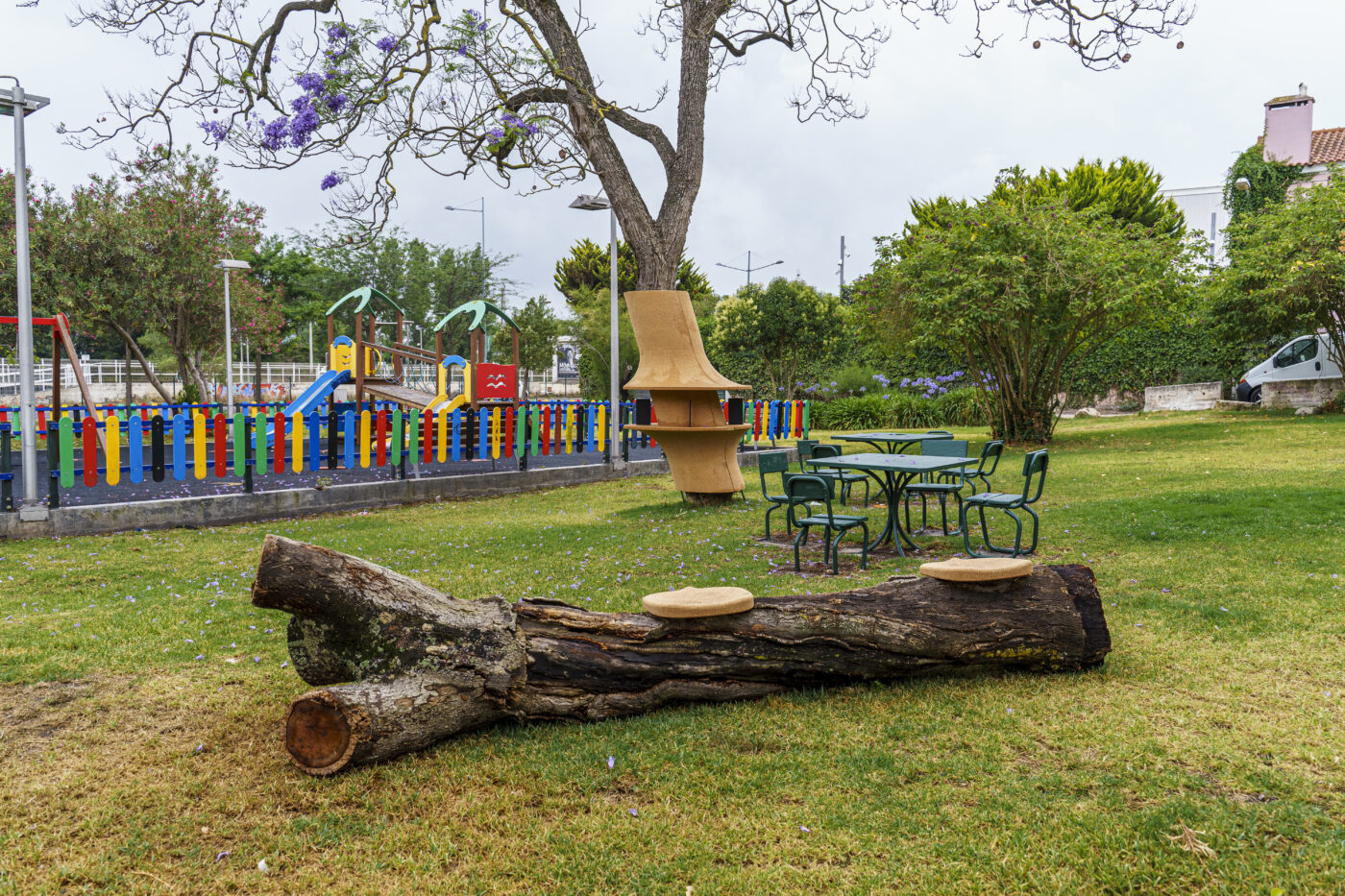
7 – Second Skin | Diller Scofidio + Renfro
Focusing on the importance of reading and literacy, as well as the relevance of green spaces in cities, the New York studio used cork to build a small outdoor community library. The installation, which “explores the natural sustainability potential of cork in an urban context”, creates a second skin of cork that wraps around the tree trunks, creating shelves and benches, surprising and inviting the public to sit, read and learn.
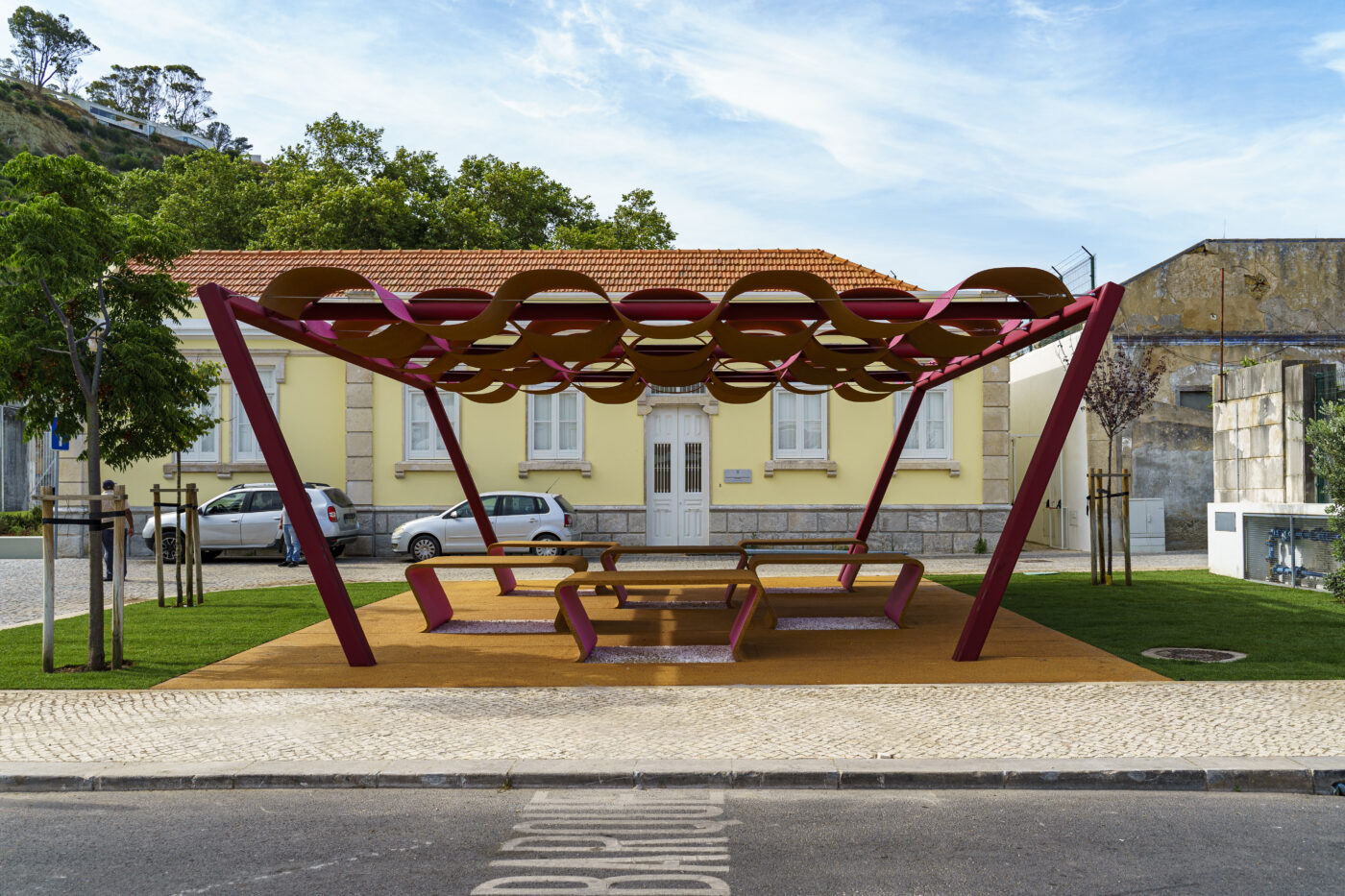
8 – Onda | Gabriel Calatrava
There are many cities that have empty, abandoned or underused urban spaces that potentially have great value for the community. Architect and engineer Gabriel Calatrava and the CAL collective created Onda, “with the aim of reinforcing the location’s emerging identity as a community that values its public spaces and the promotion of civic life”. Using cork as a central component of an occupation system, whether temporary or permanent, Onda aims to activate the encounter and coexistence of the local community and visitors to Trafaria.
Between July 12 and 21, Lisbon hosts the gastronomic week Lisboa Romana, À Mesa com os Romanos, (At the Table with the Romans), but the event takes place simultaneously in Mafra, Sesimbra, Setúbal, Palmela, Vila Franca de Xira and Torres Vedras. We went to discover (and taste) the dishes of the restaurants that, in Lisbon, will recreate the flavors of Ancient Rome. The preparation was at the discretion of each chef, but we can say that they are all more than approved.
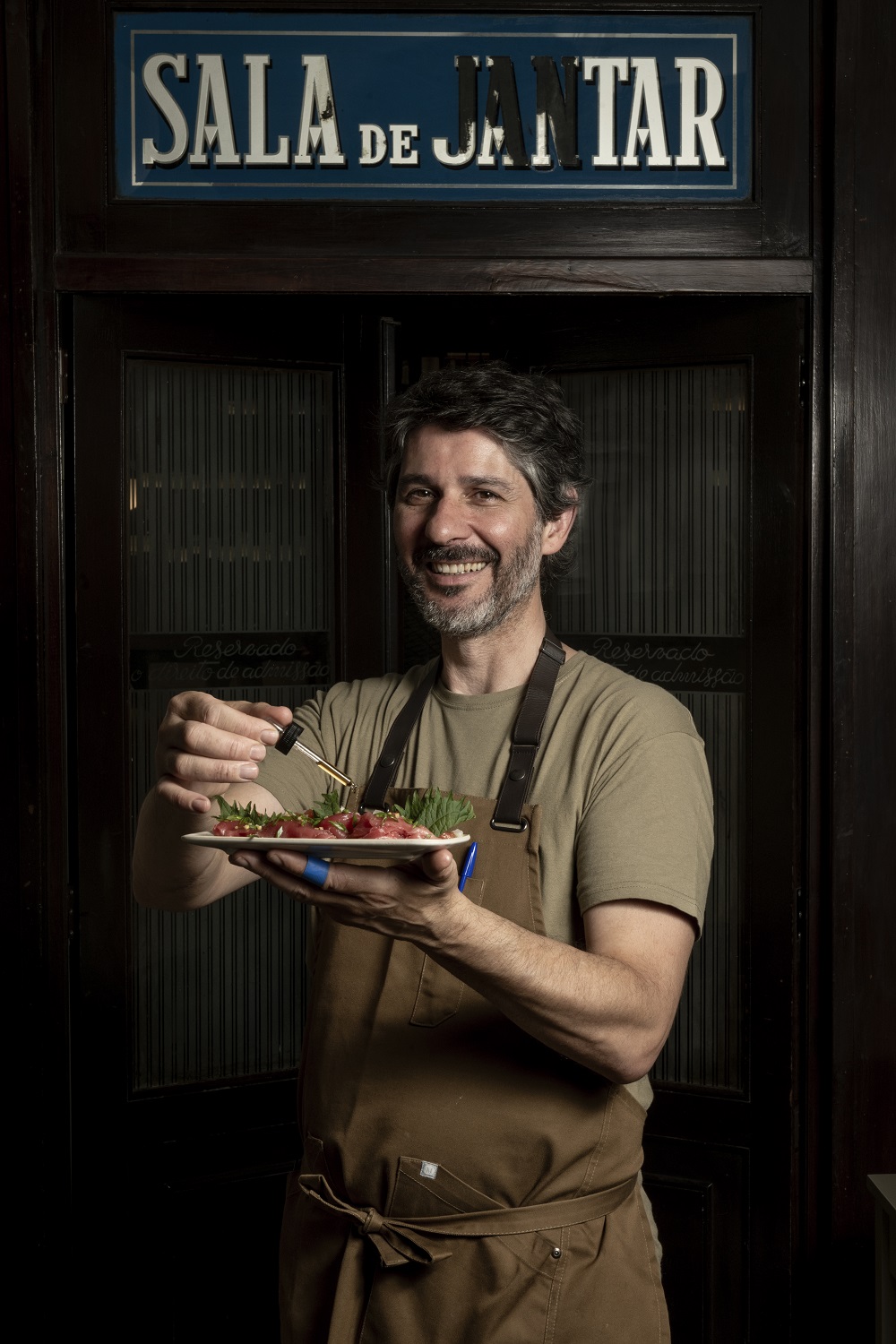
Chef Bertílio Gomes – Taberna Albricoque
Rua dos Caminhos de Ferro, 98A
Plate: Atum patudo perfumado com garum e tártaro de tomate biológico
In chef Bertílio Gomes’ space the focus is on Algarve specialties. Taberna Albricoque opened seven months before the pandemic and is currently suffering from the effects of construction work on Lisbon’s drainage plan. Despite these difficulties, the house is always full.
Roman gastronomy is a familiar theme for the chef who, at one time, had an ice cream shop in Tróia, in the district of Setúbal: “I even participated in several events to promote the Roman ruins [of Tróia]. One of the things I made was oyster ice cream.” The experience gave him strength: “I didn’t need to do much research because I’ve been serving Romans for many years, I already know them inside out”, he says jokingly.
Regarding the dish, “the inspiration had a lot to do with seasonal products, but there was also a concern to choose ingredients that everyone likes. Garum, in itself, is not a very attractive thing, not everyone knows it. Hence the importance of associating it with tuna, which is a very consensual fish.”
One of the premises of Taberna Albricoque is the rotation of dishes, so the idea will not be to keep the dish on the menu for a long time, so the best thing is to hurry up and try it.
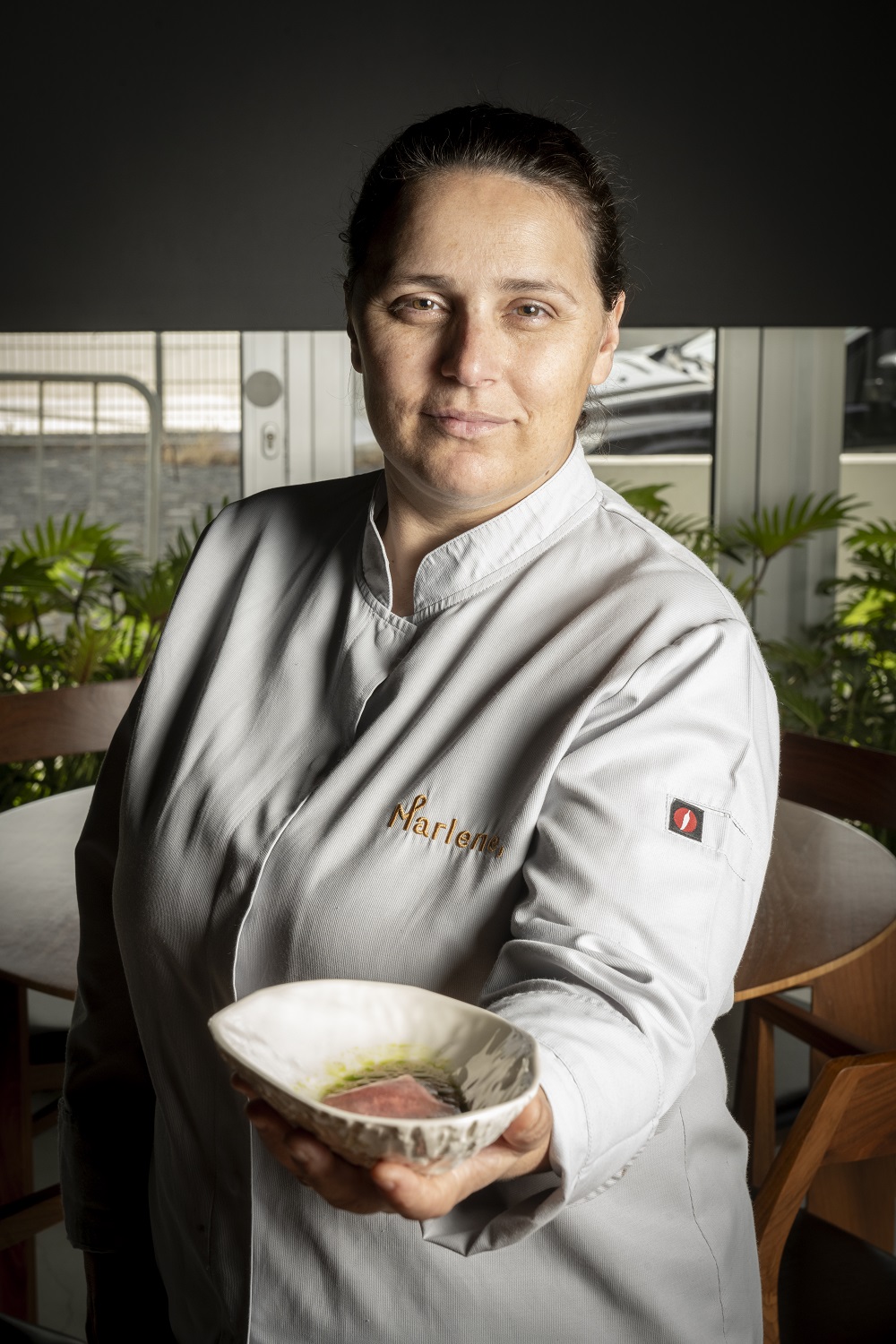
Chef Marlene Vieira – Marlene
Av. Infante D. Henrique, Doca do Jardim do Tabaco. Terminal de Cruzeiros de Lisboa
Plate: Atum com escabeche e garum de sardinha
When she received the invitation to participate in this gastronomic festival, chef Marlene Vieira soon knew that the garum would have to be present. In this dish, the important thing was to “balance the depth of flavors. It is based on escabeche, which was a method of preserving fish used by sailors on the high seas. I wanted to bring these two universes together – escabeche and garum – and the result is incredible.”
Familiar with this product of Roman origin, which she uses in other dishes, she says that when people try it, “they feel something very special, it has a lot of Portugueseness. I’m a little addicted to the use of garum due to the depth it gives to the flavors”, she confesses. The chef didn’t need to think much about choosing the dish, as it is part of the restaurant’s menu: “every now and then the protein is varied. Instead of tuna, we use mackerel.”
When asked which other dish she would like to try, she doesn’t hesitate: “I’m convinced that they will all be good dishes”, she says. Regarding her tuna with escabeche and sardine garum, she guarantees that whoever tries it “will never forget the experience”. We confirm!
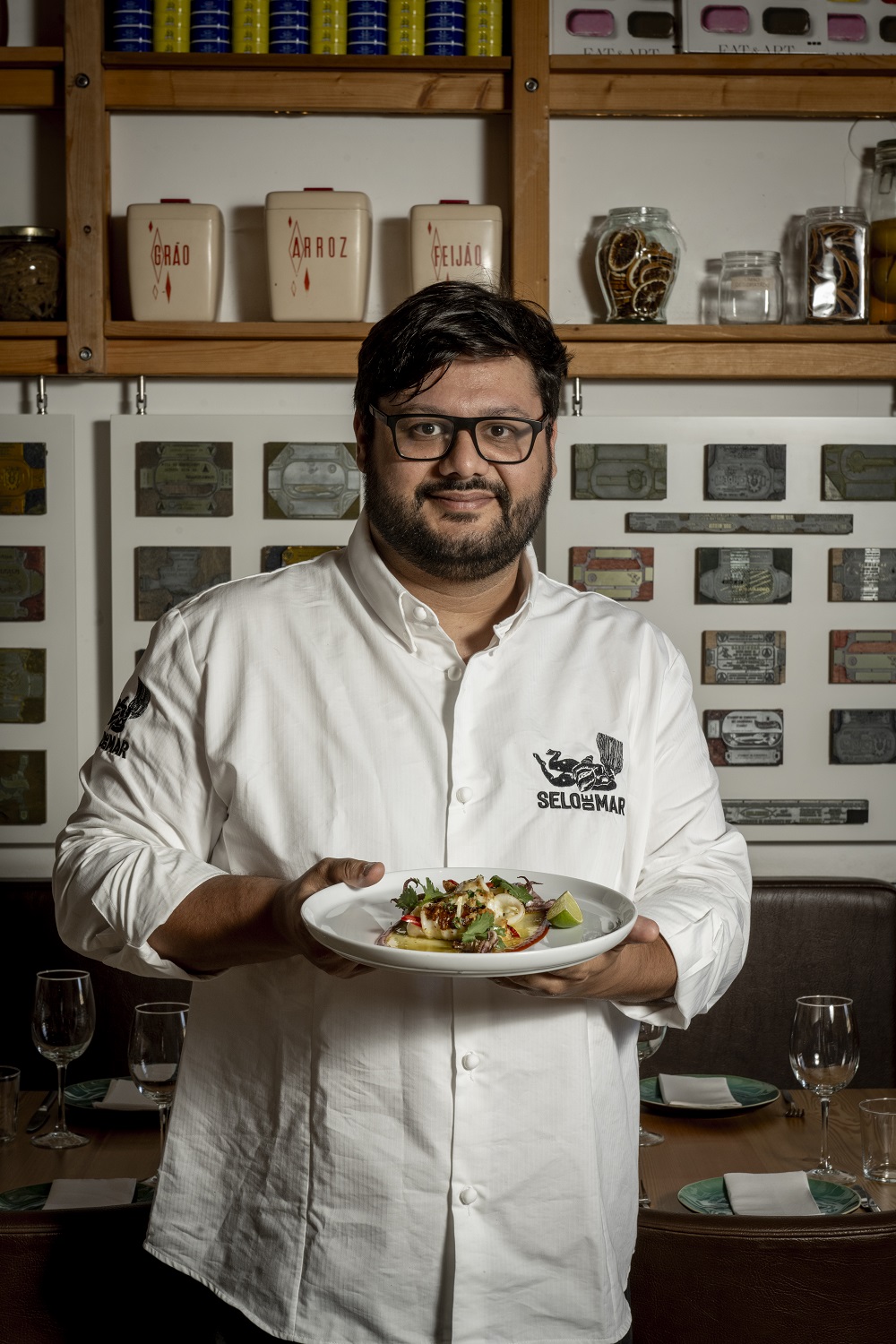
Chef Pedro Almeida – Can the Can
Terreiro do Paço, 82/83
Plate: Lula dos Açores, manteiga, coentros, molho de pimento assado com garum de cavala
Can the Can opened its doors in 2012, with the aim of promoting the national canning industry. At the same time, there is the Selo de Mar research project, which studies and rescues fish conservation techniques. About six years ago, he began researching old recipes to develop new garum formulas.
According to chef Pedro Almeida, “Selo de Mar is one of the largest producers in the world and the only one in Portugal”. The passion for this precious sauce is noticeable when we enter the restaurant. It is impossible not to notice the variety of jars available: sardines, mackerel, tuna, oyster, lily, swordfish, octopus, grouper, grouper and tuna, cuttlefish, needlefish and red mullet.
In the dish that the chef conceived for this Roman week, the garum shines “in the roasted pepper sauce, in the butter, but it is also used to brush the squid”. Recently, Selo de Mar created a dessert version made from bee pollen.
When you go to Can the Can, don’t forget to try the Abade Priscos do Mar Pudding, a version made with muxama (sea ham), which has salted caramel finished with garum.
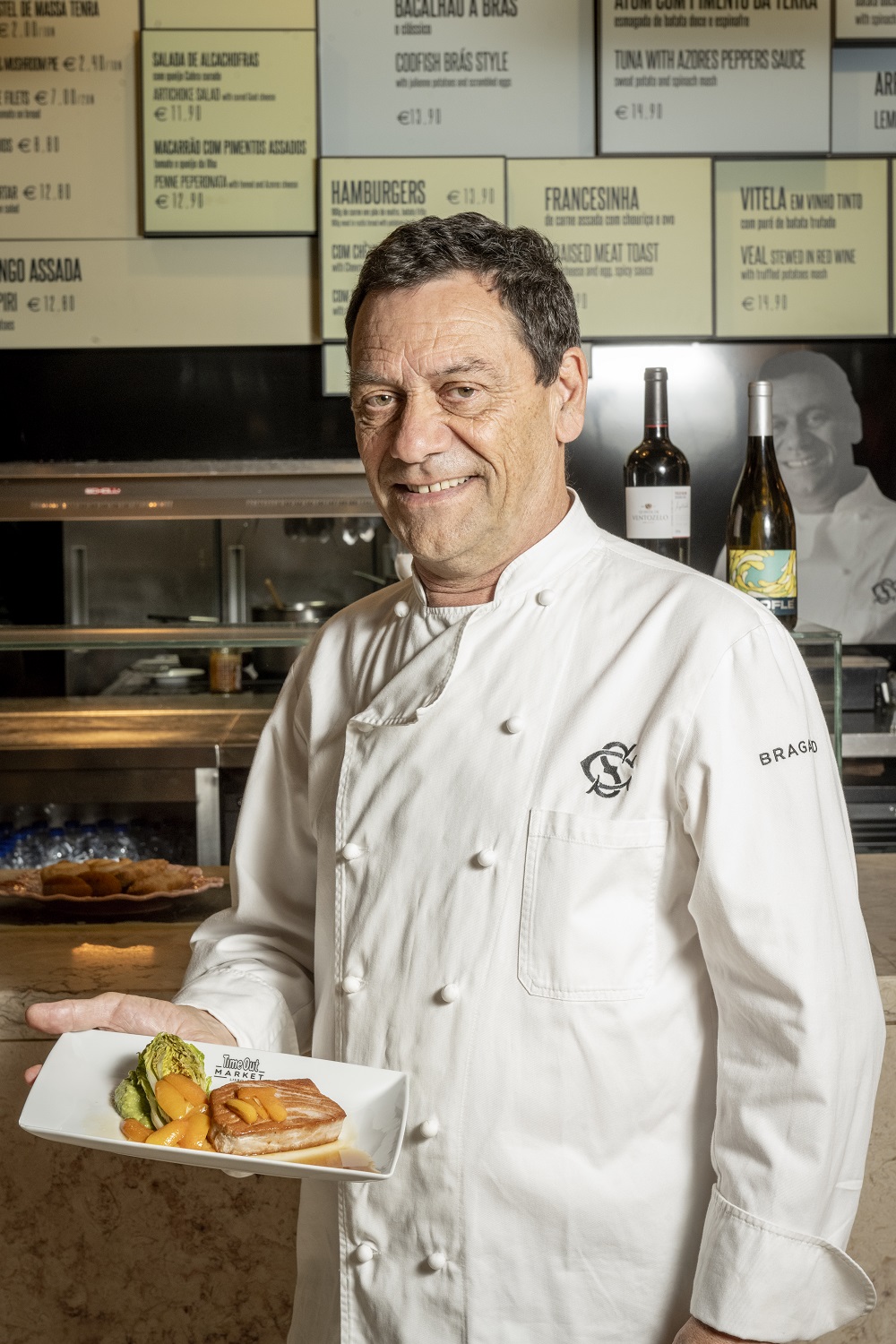
Chef Miguel Castro e Silva – Miguel Castro e Silva
Mercado da Ribeira – Av. 24 de Julho
Plate: Atum com citrinos e garum
Located in Mercado da Ribeira since 2014, the year in which several restaurants were set up there, the space run by chef Miguel Castro e Silva focuses on traditional Portuguese food.
When he was invited to participate in this gastronomic week, he immediately decided that the starting point in creating the dish could only be the garum. Produced by Selo de Mar, the “product is of extraordinary quality”, he guarantees.
Until arriving at the latest version of this dish, he tried several approaches: “it made sense to associate tuna with citrus, which are flavors that have everything to do with Ancient Rome. I serve it with mashed avocado and lightly toasted romaine lettuce with a sauce made with vegetable broth and garum.”The chef did some research – namely through the book by Apicius, a Roman gastronome from the 17th century. I, but he had already done intense research work years before, when he was invited by the História channel to recreate Christ’s last supper.
Castro e Silva likes this creation so much that he wants it to stay on the menu for some time. We are also rooting for this to happen!
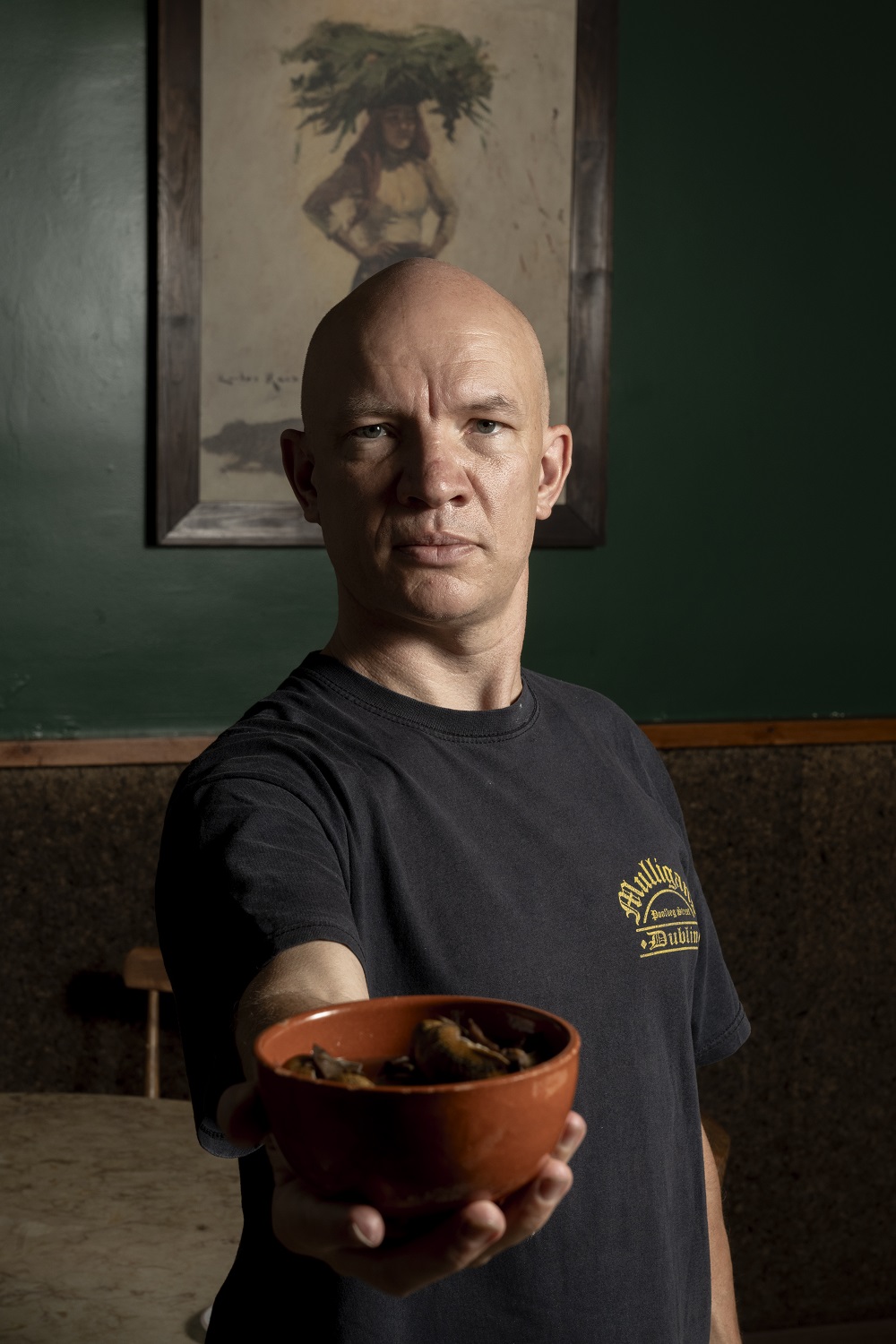
Chef Gareth Storey – Antiga Camponesa
Rua Marechal Saldanha, 25
Plate: Caracóis, caldo de Aipo-dos-Cavalos de Monsanto, manteiga de Hallec
“I don’t care what people like to eat, I just cook what I like” says, without any problems, Irish chef Gareth Storey. “It would be very strange to cook something I don’t like. I prepare the menu and the customers decide whether they approve or not. To this day it has worked.”
Working at Antiga Camponesa since its opening in October 2022, the chef is very demanding: “if we only give people what they want, we will only have burgers, pizzas and sushi on the menu”.
He spent ten years in France, and it was under the influence of his wife – French, but with a connection to Portugal – that he came to work in Lisbon. “Compared to Paris, Lisbon is a paradise, the people are friendly”, guaranteeing, with a laugh, that he is here to stay.
Regarding the Roman dish, he didn’t do any intense research, he just used “instinct and imagination. It made perfect sense to me to imagine the Romans eating snails and drinking wine.” One of the house’s policies is to use seasonal products, so this dish will be on the menu as long as there are snails.
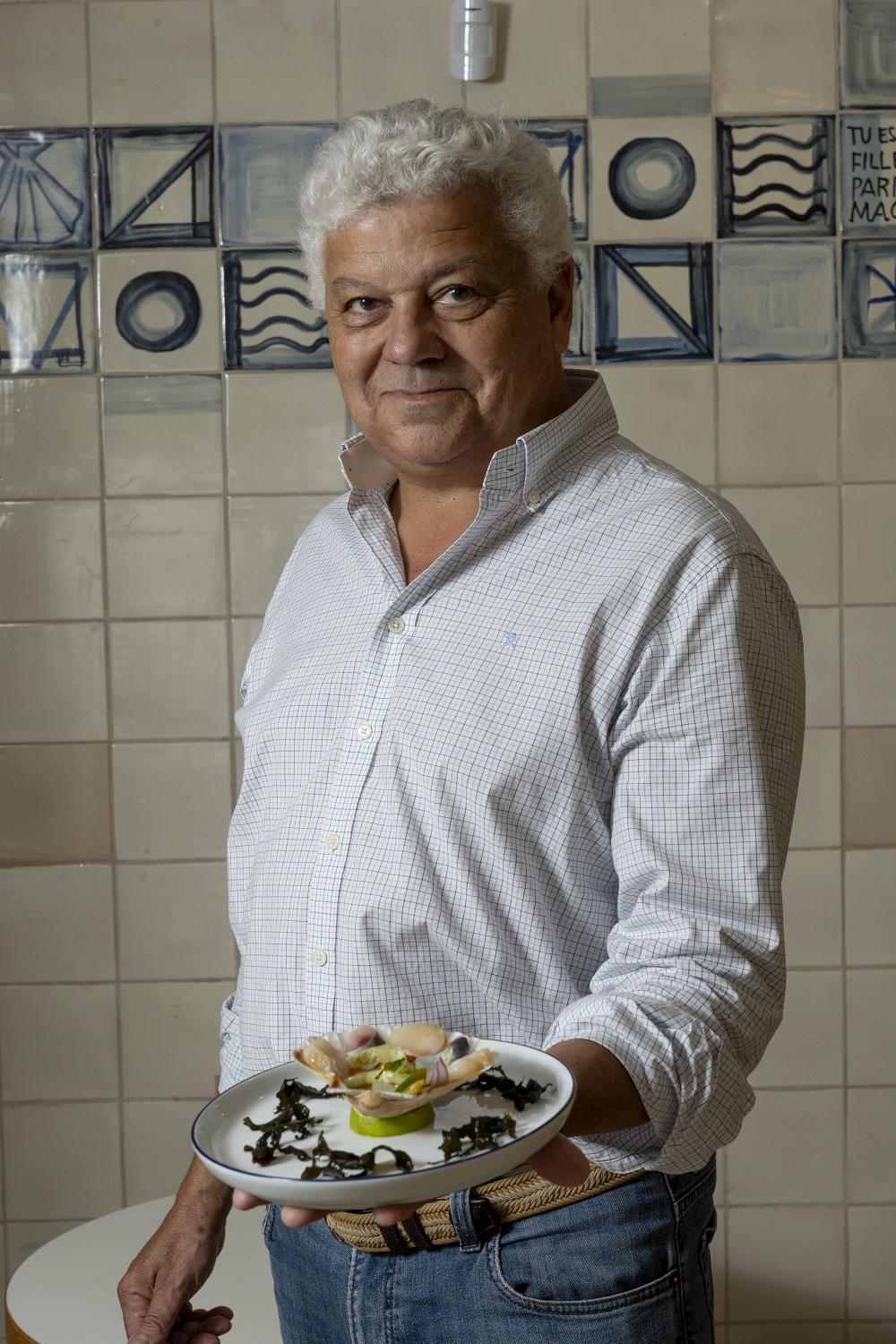
Chef consultor André Magalhães – Vieira Café
Praça das Amoreiras, 56
Plate: Vieira e sardinha, garum alfacinha
On the ground floor of Arpad Szenes-Vieira da Silva Foundation we find Vieira Café, which recently reopened with a new concession and consultancy from chef André Magalhães. In this new phase of the space, the chef was challenged to create dishes that link culture and gastronomy. The decoration itself plays with the name of Maria Helena Vieira da Silva and the scallops present in the tiles designed by Manuel Cargaleiro (from the painter’s originals).
For the dish of the Roman week, André Magalhães chose to use the scallop, a “bivalve that, according to archaeological research, existed in the Tagus in Roman times”. Another striking element is the garum alfacinha (made in-house), as well as the lettuces “appreciated since Roman times” and sardines, “very typical of Lisboa”. The dish also has a decorative (and edible) element: algae from the Tejo River.
The idea is to recreate Roman flavors but, to do so, “there is an element of fantasy that we have to keep in mind. We are revisiting flavors that could have been common two thousand years ago”, he says. If everything goes as expected, the dish will be kept on the menu.
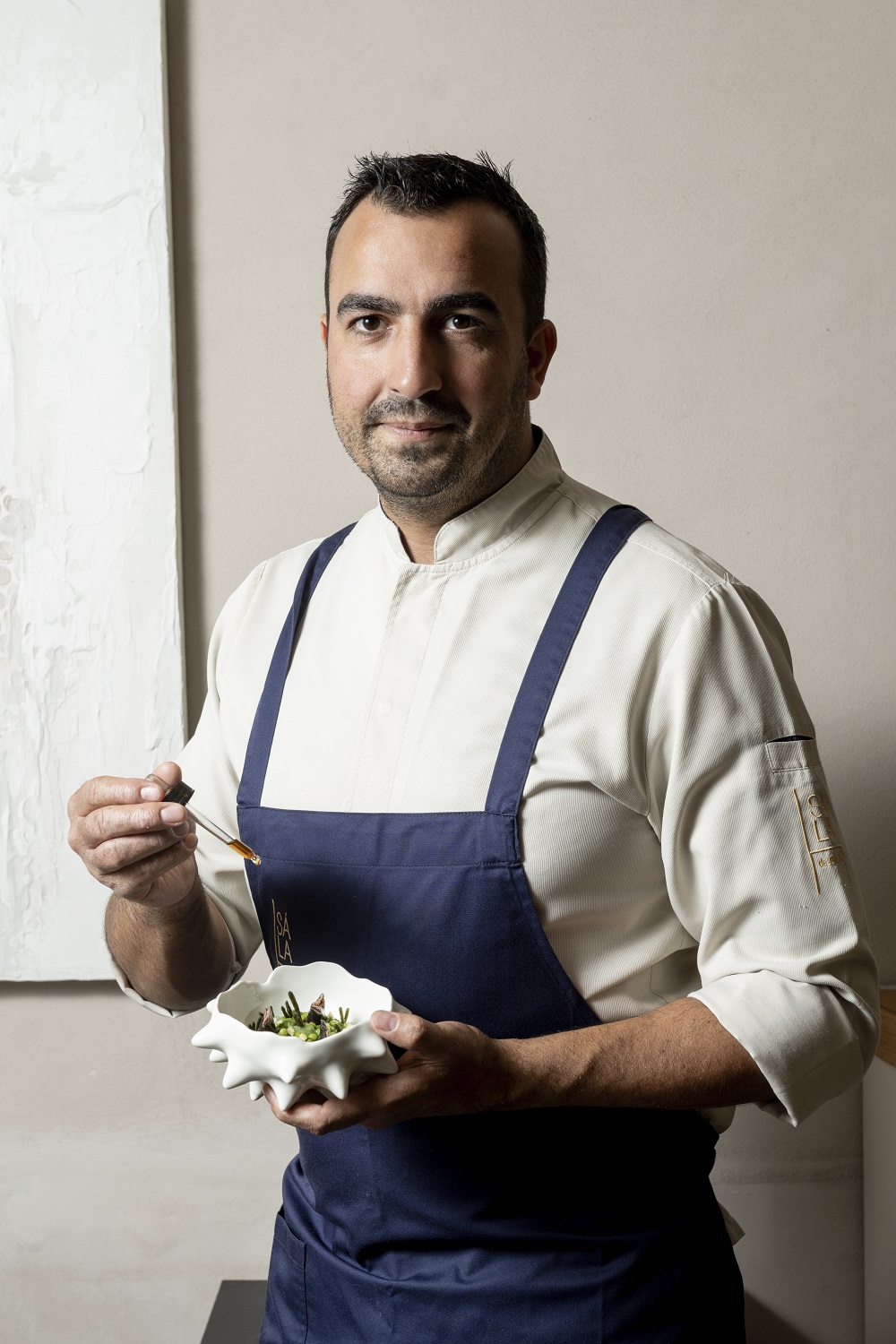
Chef João de Sá – Sála de João de Sá
Rua dos Bacalhoeiros, 103
Plate: Cuscos, coentrada e garum de sardinha
Sála is located in the heart of Baixa Pombalina. Since it opened five and a half years ago, the restaurant has had its hands full. If demand is a clear sign that the service is good, what can we say about the Michelin star it received this year? For chef João Sá, it is “a recognition that reflects the work of these five years”.
At Sála, we mainly find dishes linked to national cuisine and local products. For this specific dish, the idea was to find “a balance between the history of the city of Lisbon and the influence left by the Romans”. The dish already existed on the menu, but, to tie everything together, we used the sardine garum produced by Selo de Mar.
This is, in fact, a product widely used in this restaurant, with a curious fact: here it’s the customer who chooses the type of garum to put on the plate: “we give it to smell and taste, we explain what it is and let the customer decide. The most popular are sardines and mackerel. There are people who already know it, others who don’t know it and who are delighted and also people who don’t like it at all. There’s a taste for everything,” he says.
Finding a quiet place, where it is possible to see an exhibition, attend a concert or a lecture, or simply read a book, may not be an easy task during the Festas de Lisboa month. But, here are some suggestions.
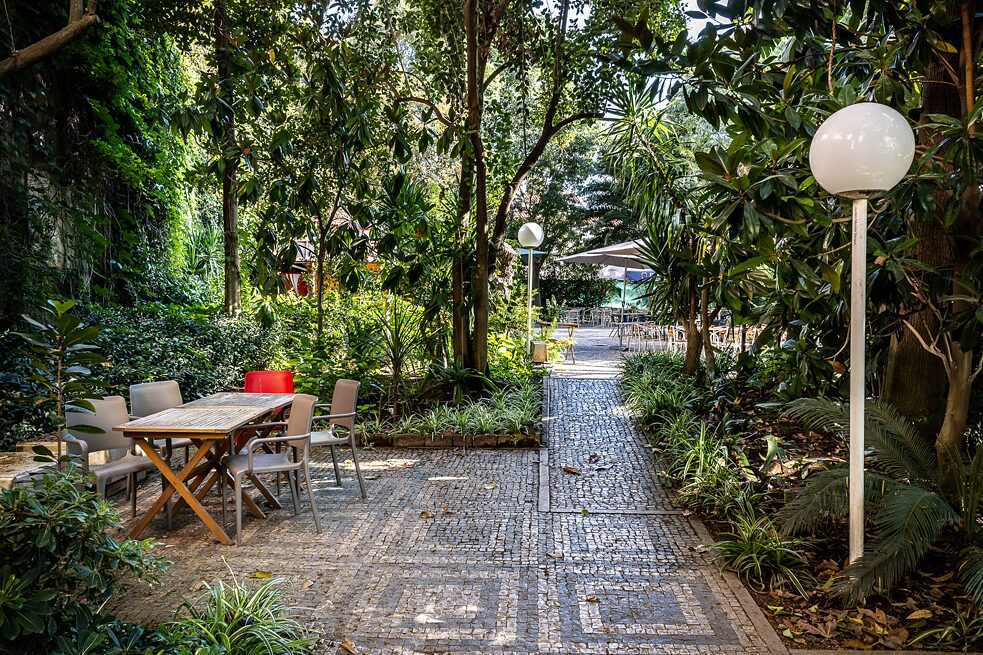
Goethe-Institut
The old Palácio Valmor, built in the 18th century, was, in addition to being a family residence until the beginning of the 20th century, the Faculty of Law of the University of Lisbon and, from 1964, the Embassy of the former German Federal Republic. Today it is the home of the Goethe-Institut.
Located in Campo Mártires da Pátria, the beautiful palace is the stage for a variety of cultural activities: concerts, cinema and literary sessions, debates and workshops. The garden, with plants originating from Asia, Africa and South America, mixed with native vegetation, constitutes a true oasis in the city center, where you can enjoy a terrace that serves German specialties.
Another highlight is the library, an ideal place to read, study or work and where there is a small reading garden (separate from the main garden).
In June, the garden hosts MediaCon (June 28 and 29), a festival of dialogue about journalism, organized by newsrooms that publish free access journalism, and also Encontros com “Galileu” de Brecht (June 7 and 14).
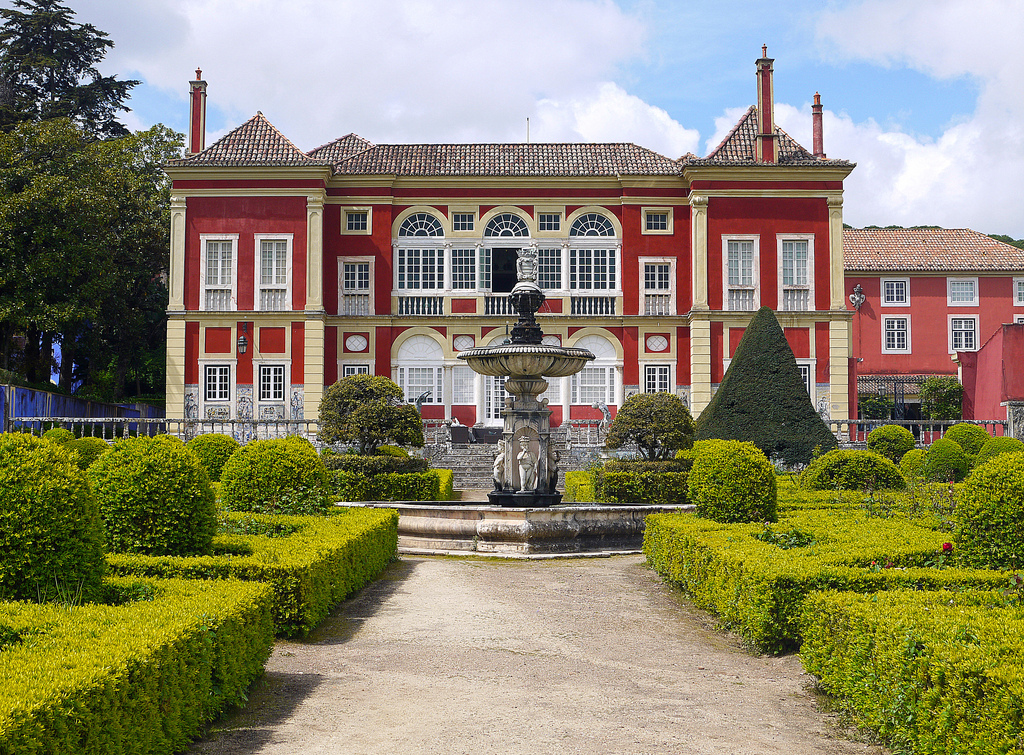
Palácio Fronteira
Located in an old Quinta de Recreio, Palácio Fronteira is one of Lisbon’s most beautiful monuments from the 17th century. The building, today a National Monument is a museum-house, that maintains its design very close to its original design, preserving the largest collection of seventeenth-century azulejos (Portuguese tiles).
Having the particularity of continuing to be inhabited by the descendants of Dom João de Mascarenhas, the first Marquis of Fronteira, the space is visitable, allowing free walks in the magnificent gardens (audio and video guides can be requested) and guided tours of the interior. There are also themed tours dedicated to the tiles and literary figures that inhabited the palace.
The place, a unique space to escape the hustle and bustle of central Lisbon, also features a regular cultural program that includes concerts, exhibitions and staged visits. Highlights in June is the concert organized and broadcasted from Palácio Fronteira by Antena 2 (June 8) and the staged visits aimed at families.
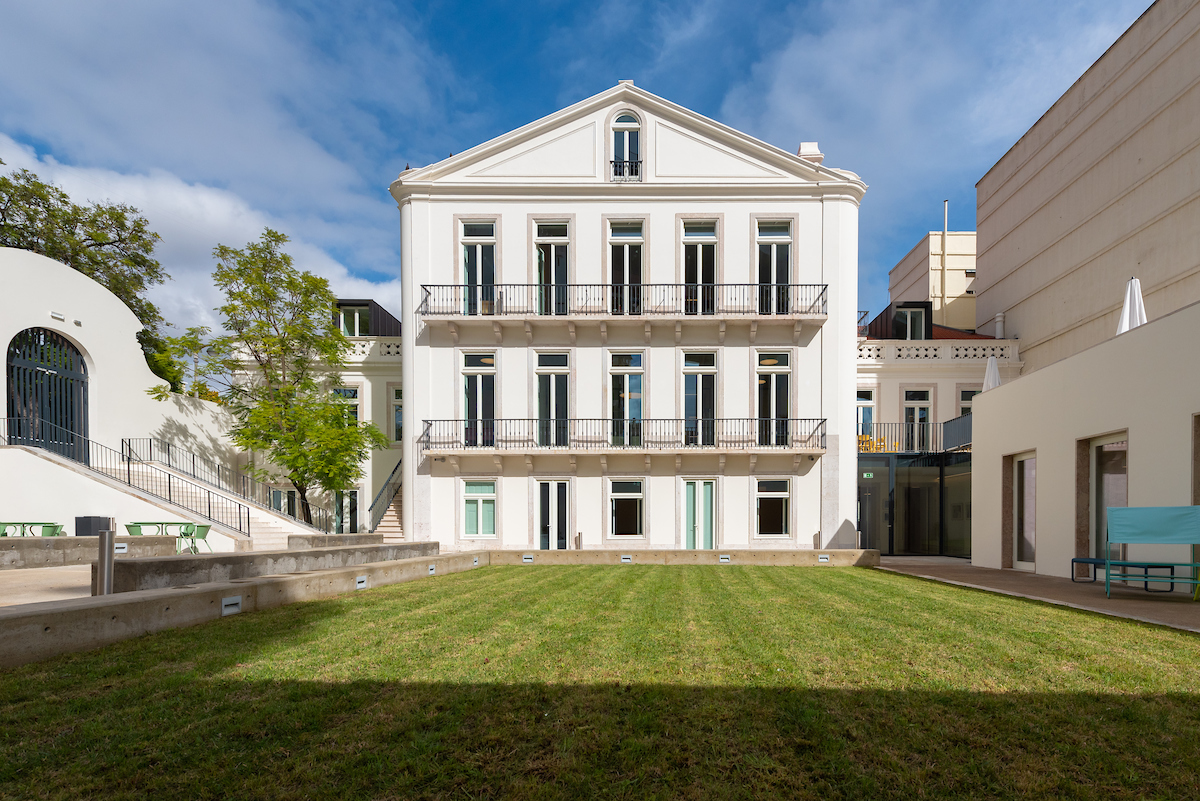
Biblioteca de Alcântara | Palacete do Conde de Burnay
The Palacete do Conde de Burnay, built at the end of the 19th century, opened its doors to the community early on and, in the 1930s, housed the Ferreira Borges Commercial School. The building was later rehabilitated and transformed into the Alcântara Library.
The library maintains a close relationship with the parish where it is located and its inhabitants, and even before opening it already had a community theater group. It is, however, open to everyone, offering public reading and multipurpose rooms, an exhibition gallery and a garden that invites relaxation and serenity.
Every month the space is the stage for various cultural events, regularly hosting film cycles, conversations, exhibitions, theater and a choir for adults and children, and the Histórias e Memórias de Alcântara project.
In June, among other activities, the programme includesa session of Filme do mês/Film of the Month (June 22), in partnership with Zero em Comportamento, and Conversations about Artificial Intelligence (June 15).
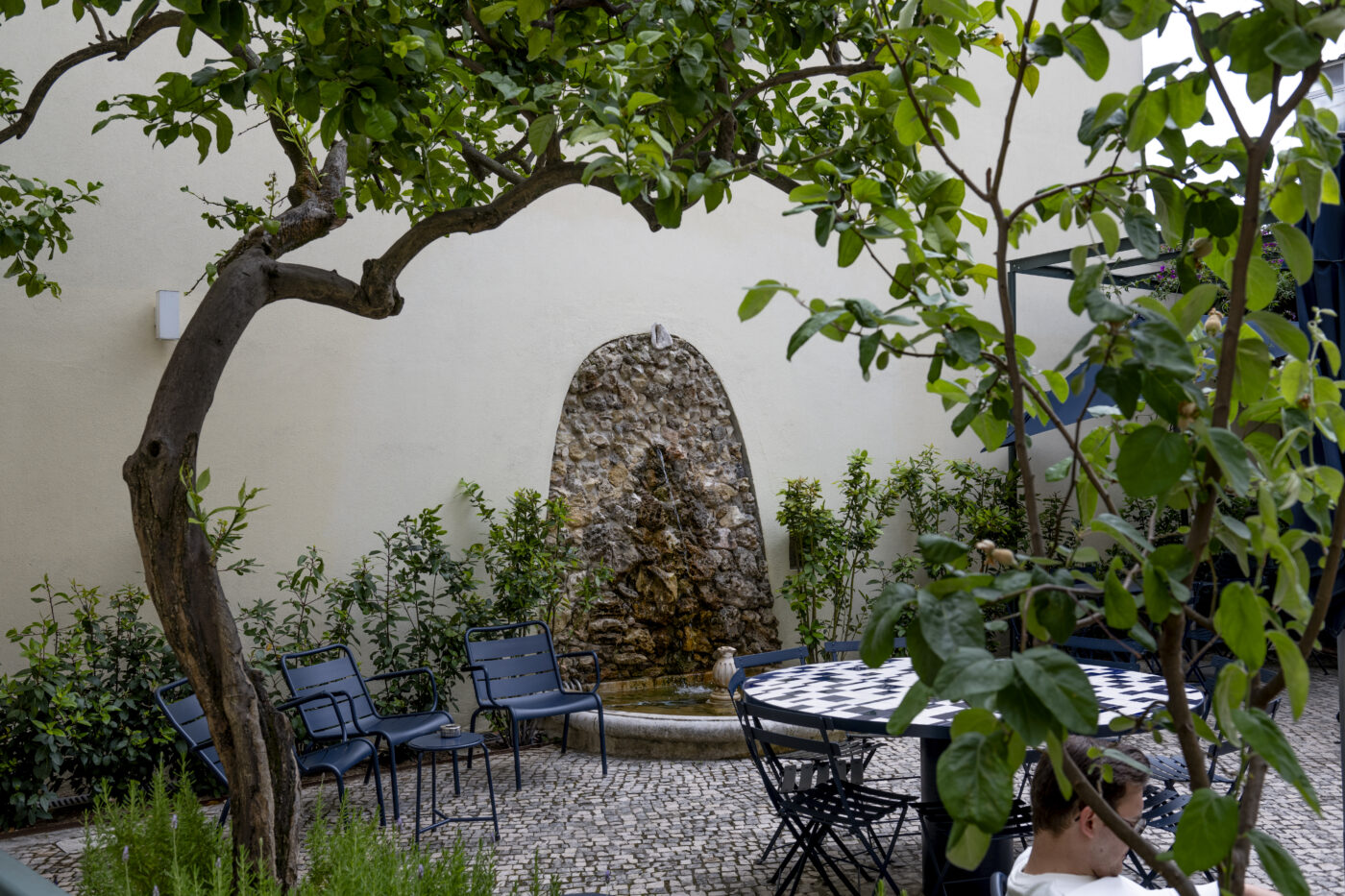
Brotéria
In the heart of Bairro Alto, in one of the liveliest areas of Lisbon, is located Brotéria, a house with history, built in the 16th century. The palace, formerly home to Condes de Tomar, was the headquarters of the Royal British Club and the Lisbon Hemeroteca Municipal. Since 2020, it has housed Brotéria, of the religious order Society of Jesus, a Jesuit cultural center, which had as its starting point the Brotéria magazine, created 120 years ago.
The space, which allows you to escape the chaos outside, includes the library, particularly valuable in the field of Theology, Philosophy, Literature and History, which brings together several reading rooms, ideal for studying or working; the café, with a friendly and silent patio, a meeting place that invites you to rest; the Snob bookstore, its own editorial project with considerable experience in the second-hand book market, and a gallery that hosts exhibitions.
From the June programme, some highlights are J.R.R. Tolkien: o objetivo da vida (June 4), the conversation and visit to the library Marcas de posse e encadernações notáveis na Biblioteca da Brotéria (June 5) and the guided tour of the palace (June 29).
Biblioteca Palácio Galveias
Housed in the building that was once the home of the Távora family is the Palácio Galveias Library. The palace, acquired by the municipality in 1928, was transformed into a Municipal Archive, Library and Museum. Located next to Campo Pequeno, the library, where Nobel Prize winner for Literature José Saramago, claimed to have “really learned to read”, is today the epicenter of regular cultural activity.
Reading clubs, conversations, lectures, concerts, exhibitions and cinema are some of the activities carried out in this inspiring and peaceful space. The large garden is a refuge that promotes outdoor reading and moments of tranquility. At the kiosk that serves as a cafeteria you can also take a break for light meals.
Of the June programme, it is worth highlighting the conversation Escrita em Dia, with Layla Martínez, a Spanish author who launched her first novel in Portugal this year (June 17), the music event Guitarras do Grácio & Convidados (June 21) and the children’s play O Gigante Egoísta, based on Oscar Wilde’s book (June 30).
Here we are in another edition of the Festas de Lisboa which, as expected, have Marchas Populares (People’s Parades) and Arraiais (Street Fairs), Thrones, Race and Weddings of Saint Anthony. As a popular manifestation of intergenerational and multicultural Lisbon, the Festas include other festivals, particularly those that evoke sights, sounds, smells and tastes from other latitudes, such as the Bollywood Holi Festival and Indian Market, in Comunidade Hindu de Portugal (June 2), the Korean Culture Festival, at Museu de Lisboa – Palácio Pimenta (June 8), the Thai Festival (between June 21 and 23) and the Festival of Japan (June 29), at Jardim Vasco da Gama, in Belém.

The Arraiais (Street Fairs) promise to be in full swing throughout the month in the parishes of Alcântara, Carnide, Estrela, Misericórdia, Olivais, Penha de França, Santa Maria Maior and São Vicente. But there are more parties on the agenda: the Festival de Telheiras (from May 24 to June 2); Arraial dos Navegantes (May 30 to June 2), in Parque das Nações, Trezena de Santo António (June 1 to 11), with fados, visits and guitar playing in Largo de Santo António; the unmissable Arraial da Vila Berta (from June 1 to 12); or the three days of music, gastronomy and crafts at Alameda D. Afonso Henriques, where the VIII Meeting of Associativism and Regionalism in the city of Lisbon takes place, between June 14 and 16. Also noteworthy is the already traditional Arraial Pride scheduled for June 22nd, in Terreiro do Paço.
The festas of Marchas Populares
Lisbon’s marchers head to Avenida da Liberdade for the city’s longest night, from June 12 to 13. This year, the parade begins with a special moment: the Dragon Dance, by Associação Geral Desportiva de Macau Lo Leong (guest group), commemorating the 25th anniversary of the Establishment of the Macau Special Administrative Region.
As for the marchas populares, preceding the parade on the Avenue, they take place at the MEO Arena between May 31st and June 2nd, always starting at 9 pm.
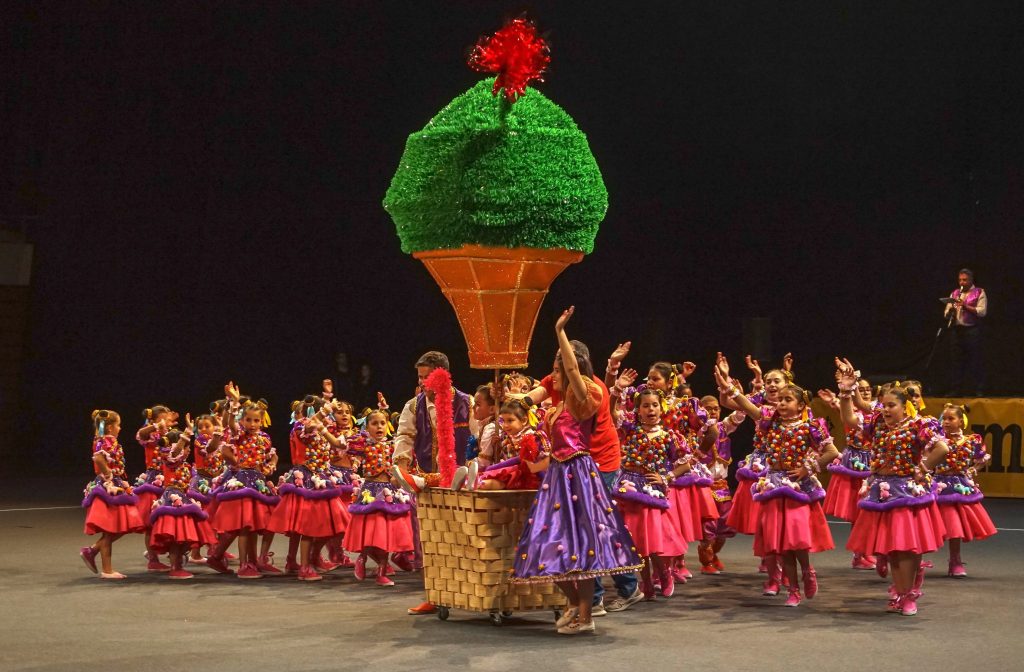
On June 15, in Jardim da Torre de Belém, almost two thousand children, divided into 39 groups, will march under the slogan “Lisbon, City of Traditions: the Tagus”. The Lisbon School Marches are a Lisbon City Council initiative in partnership with Lisbon schools, parents’ associations and parish councils.
Music and everything else
Music is another of the Festas’ strengths, with very eclectic concerts ranging from fado to jazz, popular music, dancehall, R&B and classical music. In addition to the concerts by Tony Carreira (June 29) and Richie Campbell (June 30) that close the Festas de Lisboa at Praça do Comércio, the highlight goes to a unique concert by Mariza (June 20) at Castelo de São Jorge. The fado singer presents her most recent work and covers two decades of her career in a show that promises to be unforgettable.
Also worth mentioning is classical music in the Grande Auditório of Calouste Gulbenkian Foundation, with a musical trip to Europe in the 19th and 20th centuries (June 15), and jazz, with seven concerts in Largo do Picadeiro, with national and international artists (between June 1 and 15).
The Festas de Lisboa also include cinema, theater and exhibitions.
Full programme here.
From the already emblematic Mouth of Madness section to the pool sessions, IndieLisboa continues to show that a film festival can surprise beyond just the films.
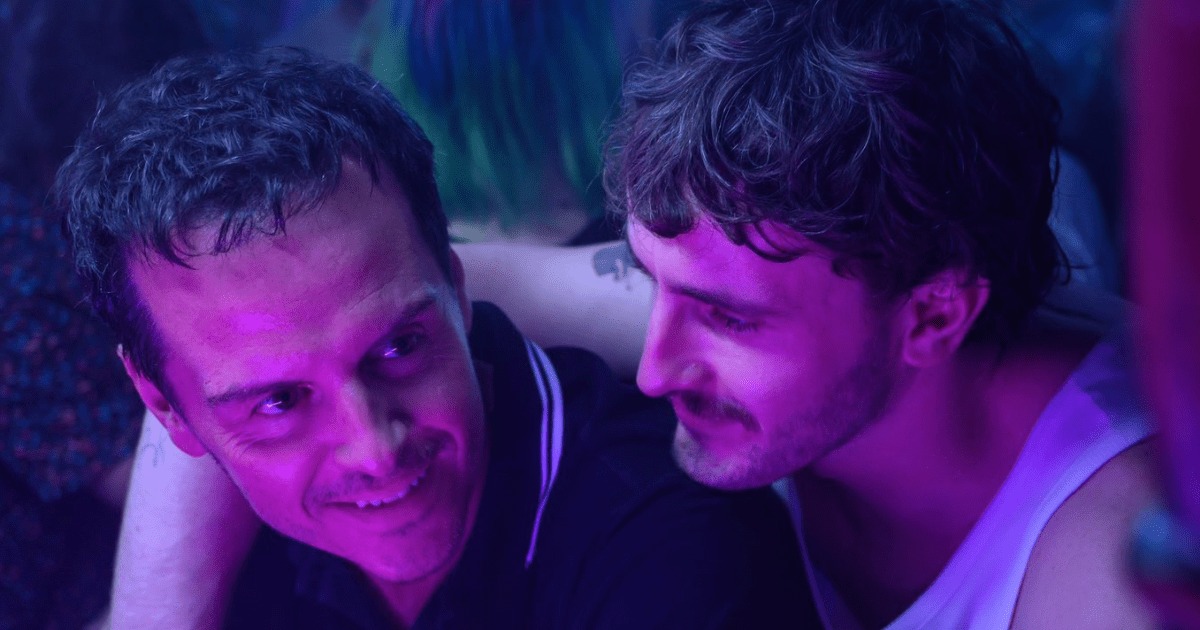
Indie Date
The blind date experience (romantic or not), which took place for the first time last year with good attendance, is back to bring together moviegoers and “counter the trend that everything is done online”. The premise is “to promote direct contact between people who, by having company to watch the film, can then talk and share ideas in person”, says Susana Santos Rodrigues, emphasizing that the aim is to “try to make the physical experience in a cinema don’t be forgotten.”
Participation in this Indie Date implies the purchase of a ticket to watch Andrew Haigh’s latest film, All of us Strangers, with Andrew Scott and Paul Mescal, in a unique screening in a theater in Portugal. Candidates for Indie Date are invited to answer a questionnaire, through which the festival’s “compatibility department” identifies the affinities between those registered, measuring the harmony in order to create the best matches so that the ending is happy.

Cinema at the Pool
The Penha de França Swimming Pool is transformed into a floating cinema room, similar to what happened in 2023. The first edition of the event had great participation and, this year, it is repeated with a program of short films for families and, for the first time, two feature films for adults.
All programmed works are based on the element of water in their theme. Susana Santos Rodrigues highlights the evening sessions where two classic films are shown: Palombella Rossa, a political satire, directed and performed by Nanni Moretti, about an amnesiac communist leader who is also a water polo player; and Piranha, a cult parody directed by Joe Dante, where genetically altered and deadly piranhas terrorize a summer resort bathed by a beautiful lake.
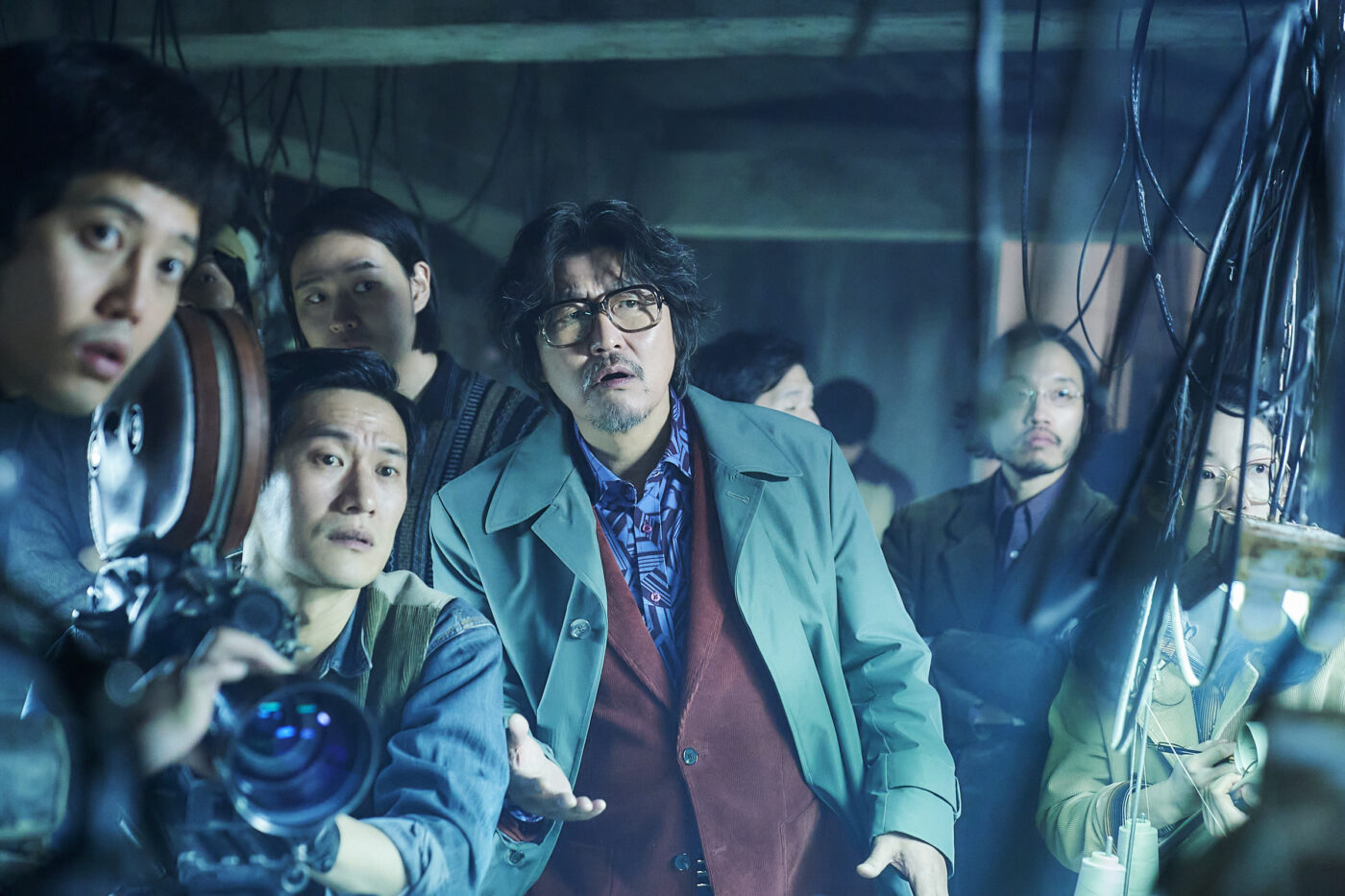
Mouth of Madness Marathon
The most daring section of the festival, Mouth of Madness, where terror, sarcasm and adrenaline mix, brings something new: a marathon session that starts at 11pm on May 31 and ends at six in the morning the following day.
The most daring public is invited to spend the night at Cinema Ideal and watch a program that includes short and feature films. Among them, Late Night with the Devil, by Cameron Cairnes and Colin Cairnes, stands out, which reveals a lost recording of a Halloween episode, from a 1977 talkshow, where the interviewees are a parapsychologist and a girl who appears to be the only one survivor of a satanic church mass suicide; and Cobweb, by Korean Jee-Woon Kim, a comedy about a director who decides to imprison his film’s critics until he produces a masterpiece.
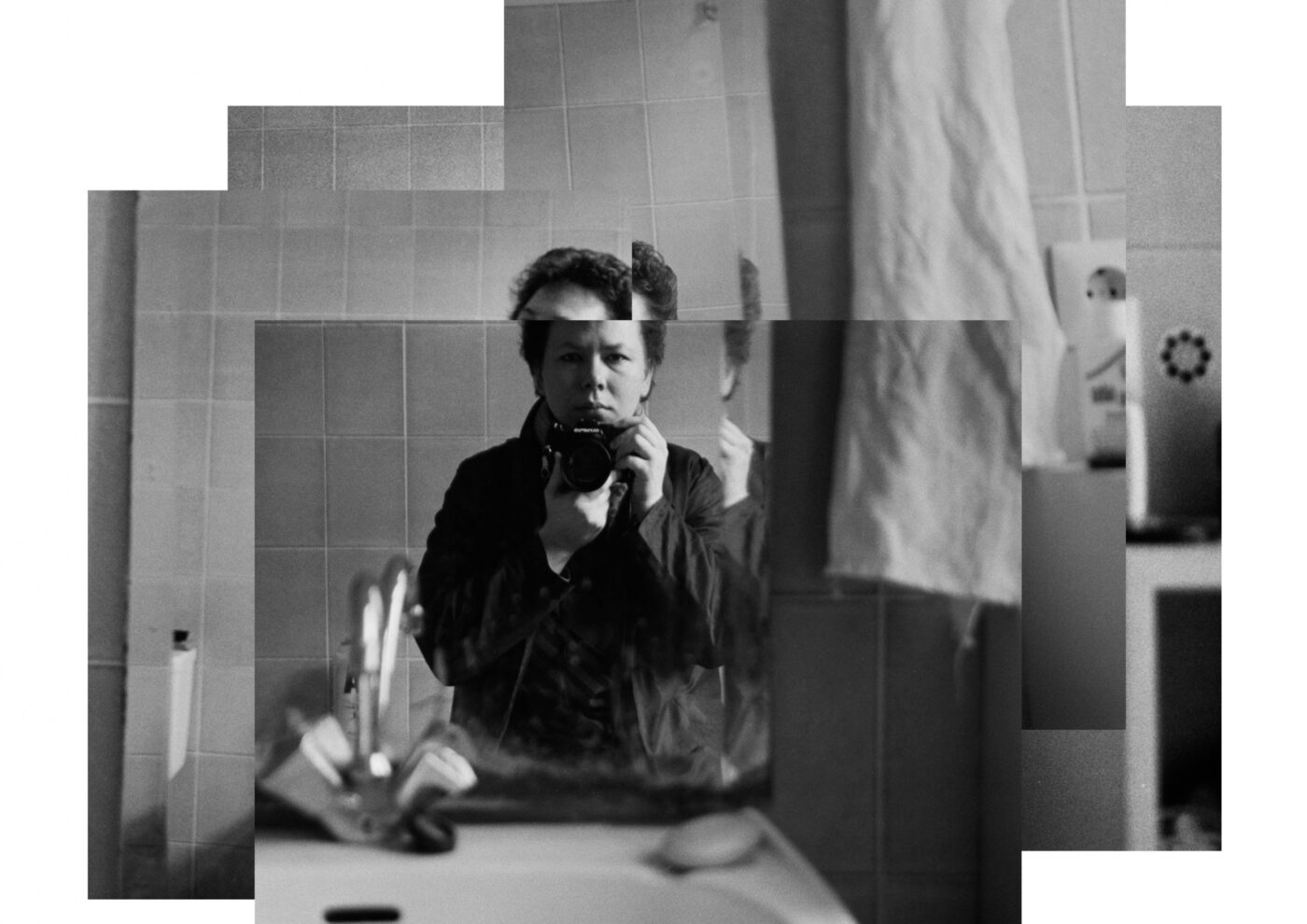
7 films “outside the box” + 2 surprise films
From the vast programme and at the request of the Lisbon Agenda Cultural, Susana Santos Rodrigues also suggests seven films not to be missed.
One of them, in the opening session: I’m Not Everything I Want to be, a portrait of photographer Libuše Jarcovjáková, nicknamed “Nan Goldin of Czechoslovakia”, an unconventional figure who together with director Klára Tasovská come to Lisbon to present the documentary. Another is the closing film: Dream Scenario, by director Kristoffer Borgli, author of one of the sensational films of the last edition, Fed Up with Myself, with Nicholas Cage playing an insignificant biology professor who, suddenly, becomes famous for appearing in the dreams of many people.
No Other Land, made by a Palestinian collective, about the destruction that Israel causes in its attempt to occupy larger swathes of land; Fidai Film, by Kamal Aljafari, which rebels against the theft of memories from a country, Palestine; Rotting In The Sun, by Sebastián Silva, a film with enormous sarcasm, which nevertheless has incredibly moving moments; The Afterlight, by Charlie Shackleton, where dead actors from all over the world come back to life creating a cast of angels and ghosts; La Chimera, by Alice Rohrwacher, which follows an archaeologist in search of ancient treasures and impossible desires; The Feeling That The Time For Doing Something Has Passed, by Joanna Arnow, who directs, stars in, writes and edits her first feature film, a comical mosaic of experiences and finally, In Restless Dreams: The Music of Paul Simon, by Alex Gibney, about the musician and composer, Paul Simon, complete the list of recommendations.
For the first time, two surprise films are also scheduled to be shown on the last weekend of the festival and about which information will only be available closer to the screening date. Two well-kept secrets to challenge the most curious.
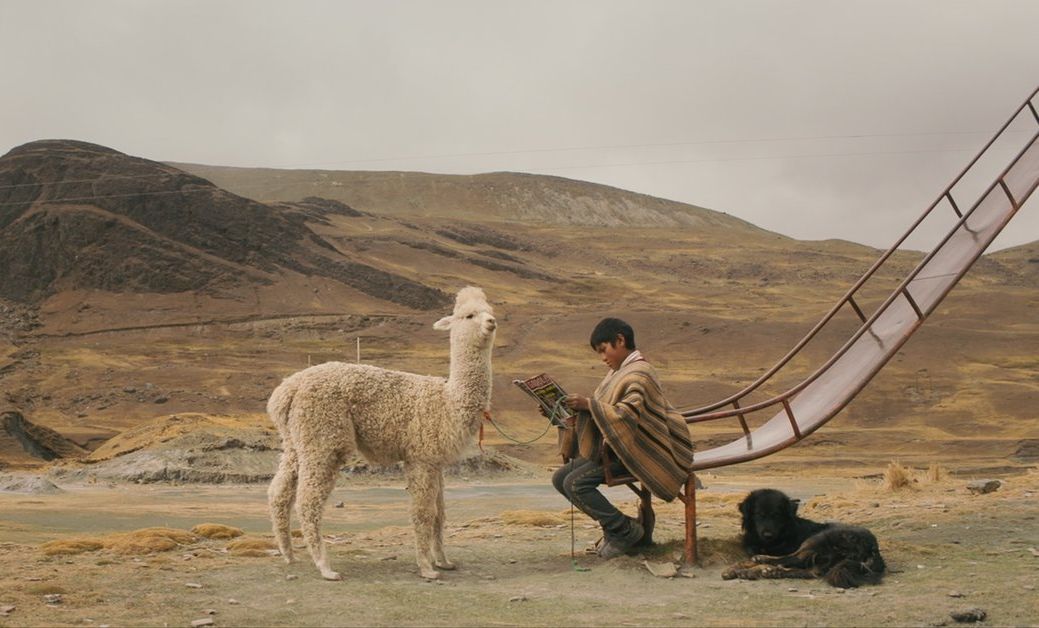
Knitting at the Festival
Susana Santos Rodrigues also highlights an unlikely moment of Knitting at the Festival, which has as its starting point the screening of the film Between Rocks and Clouds, by Franco García Becerra. “This beautiful feature film that takes place in Peru tells the story of an eight-year-old boy, a lover of family, football and nature, who is an alpaca herder.” Parallel to the screening of the film, Indie invited a local knitting club, interested parties and enthusiasts of working with yarn, to teach spectators of all ages how to knit, with needles or their fingers.
The rest of the festival programme and more details about these suggestions are available here.
paginations here